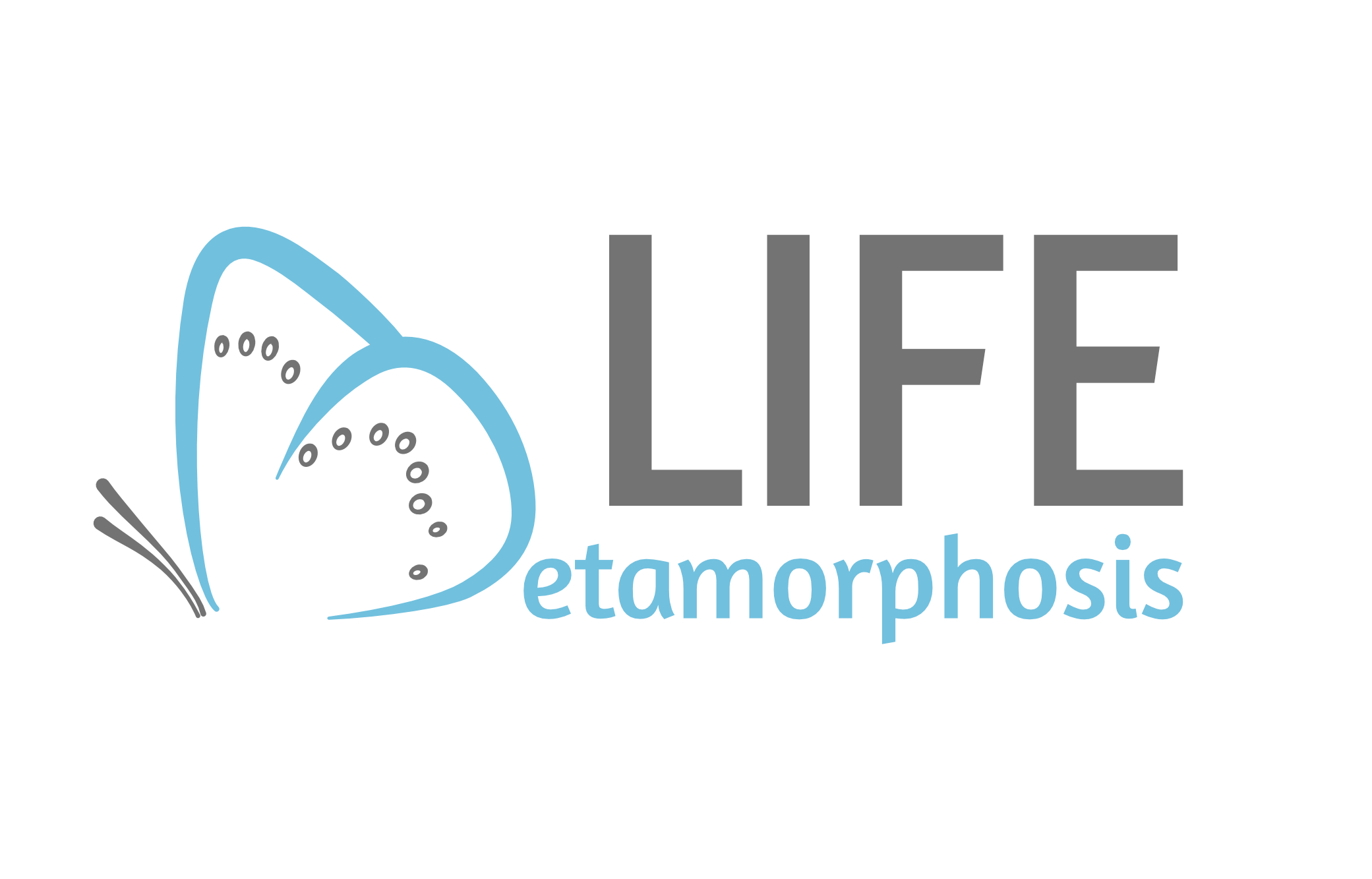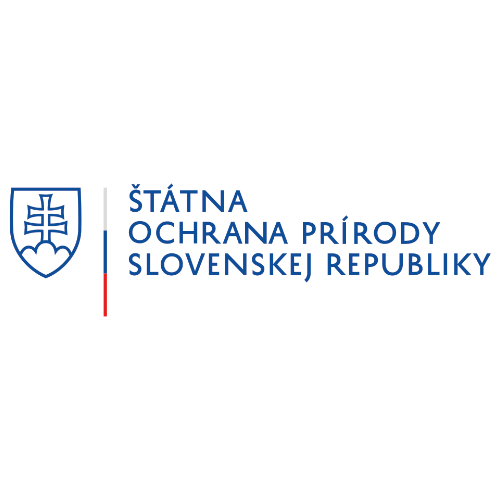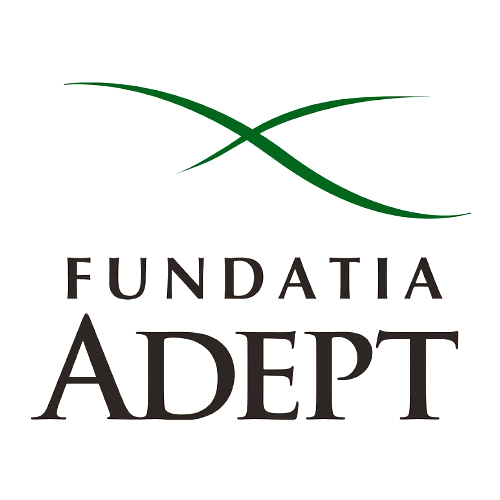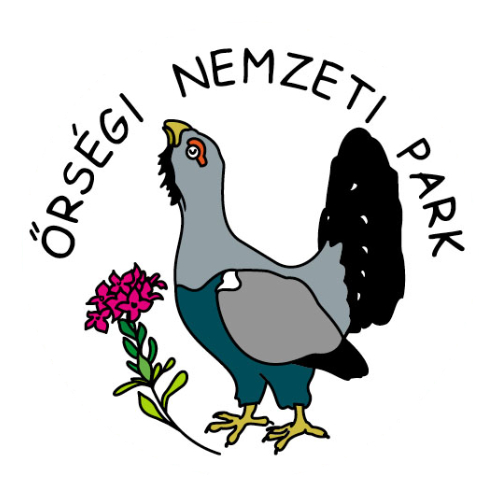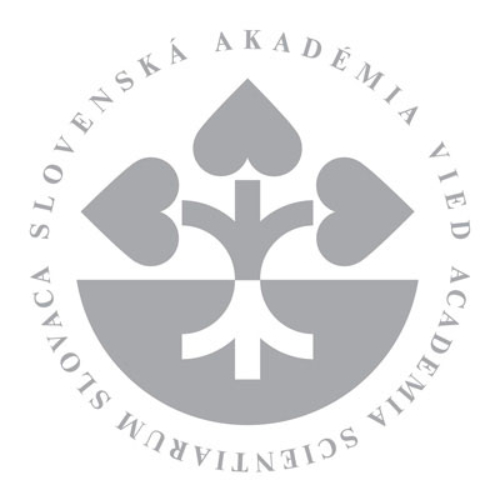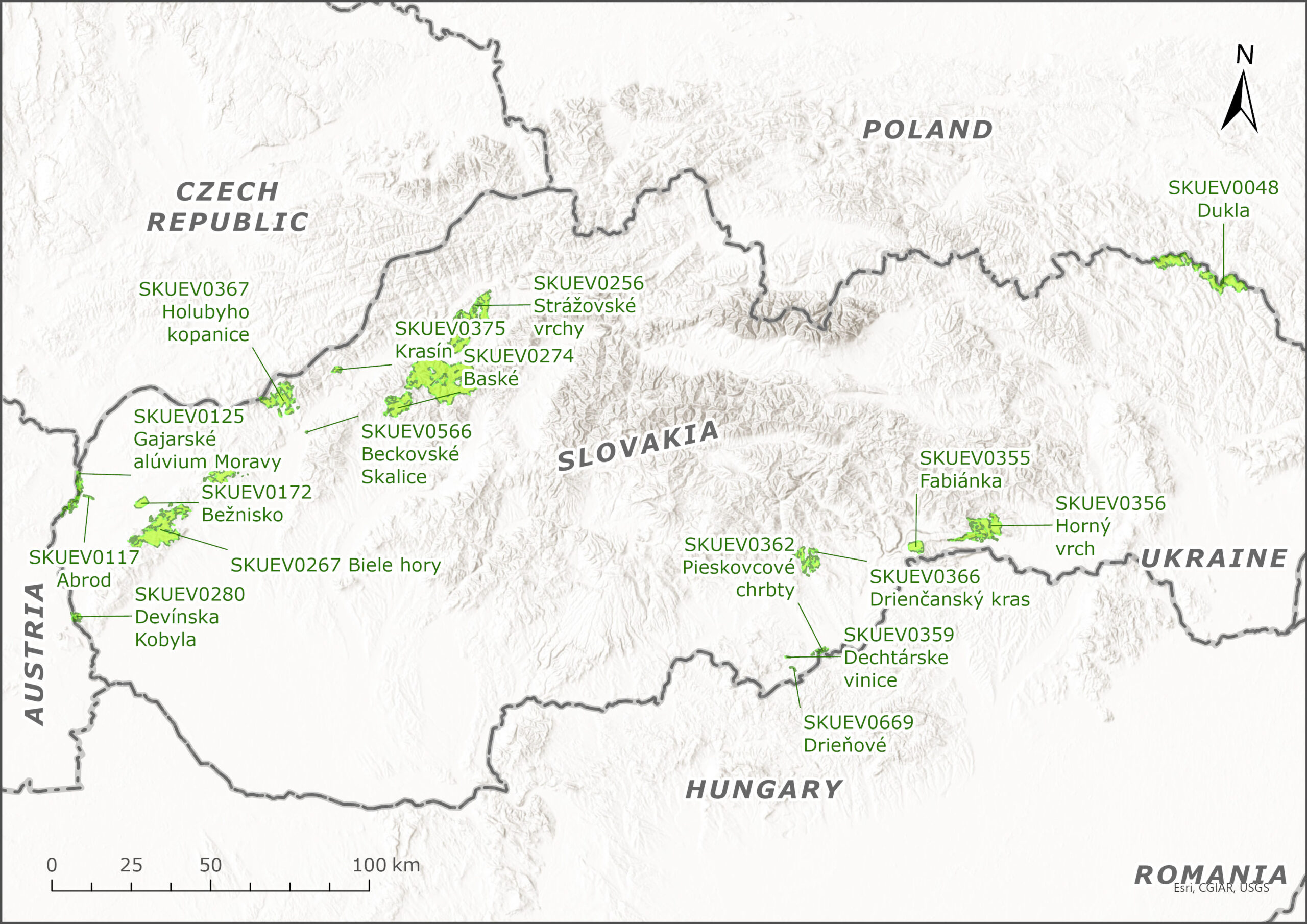Developing best practices in butterfly conservation in Central and Eastern Europe
The Metamorphosis project focuses on the conservation of 15 butterflies species listed in Annexes II and IV of the EU Habitats Directive, in three member states (Slovakia, Hungary and Romania) and habitat type 6210 Semi-natural dry grasslands and scrubland facies on calcareous substrates (Festuco-Brometalia) (*important orchid sites).
The aim of the project is to improve the conditions of the target species’ occurrence through appropriate management of habitats and restoration of already extinct populations. It contributes to halting the decline of pollinators and improving the connectivity of the protected areas network.

Co-funded by the European Union. Views and opinions expressed are however those of the author(s) only and do not necessarily reflect those of the European Union or CINEA. Neither the European Union nor the granting authority can be held responsible for them.

Farmers in Romania discuss habitat restoration measures
The project is holding community meetings underway to present the project to farmers, and to discuss with farmers who will be involved in habitat restoration. ADEPT held meetings with local actors, in Bobâlna and Agârbiciu communes, to identify and discuss habitat restoration efforts, including 120 ha affected by bracken (Pteridium aquilinum) and 4-5ha of haymeadow invaded by scrub.

We are restoring habitats with the occurrence of the great burnet in the Holuby’s Kopanice site.
Wetlands with an undisturbed water regime play an irreplaceable role in the ecological stability of the landscape. In addition to their ability to effectively retain water in the landscape over the long term, they are also able to host rare and scarce species of animals and plants.

We restored wetlands for butterflies
Last year, in the Site of European Importance 'Holubyho kopanice' in the White Carpathians, we focused on clearing several springs and travertine marshes of invasive woody plants, maintaining infiltration pits, and hand-mowing meadows in their vicinity. These rare wetland habitats are inaccessible to larger machinery, which led to the abandonment of management practices, gradual overgrowth, and subsequent drying out.

We organised a seminar for farmers
On Tuesday, November 26, 2024, we organized a seminar at Beckov Farm as part of the LIFE Metamorphosis project focused on sustainable deworming of livestock. This is a method of protecting animals from parasites that takes biodiversity conservation into account. Entomologists Ľuboš Víťaz and Tomáš Olšovský, farmer Ivana Kodajová, and the director of the Institute…

First attempts to reintroduce bluebirds have been made
The reintroduction of the protected species Pseudophilotes bavius and Phengaris teleius began in the Romanian project sites in 2023. In the following season, several individuals of Ph. teleius were observed in sites near Angofa, thus the reintroduction effort for this species can be considered successful.
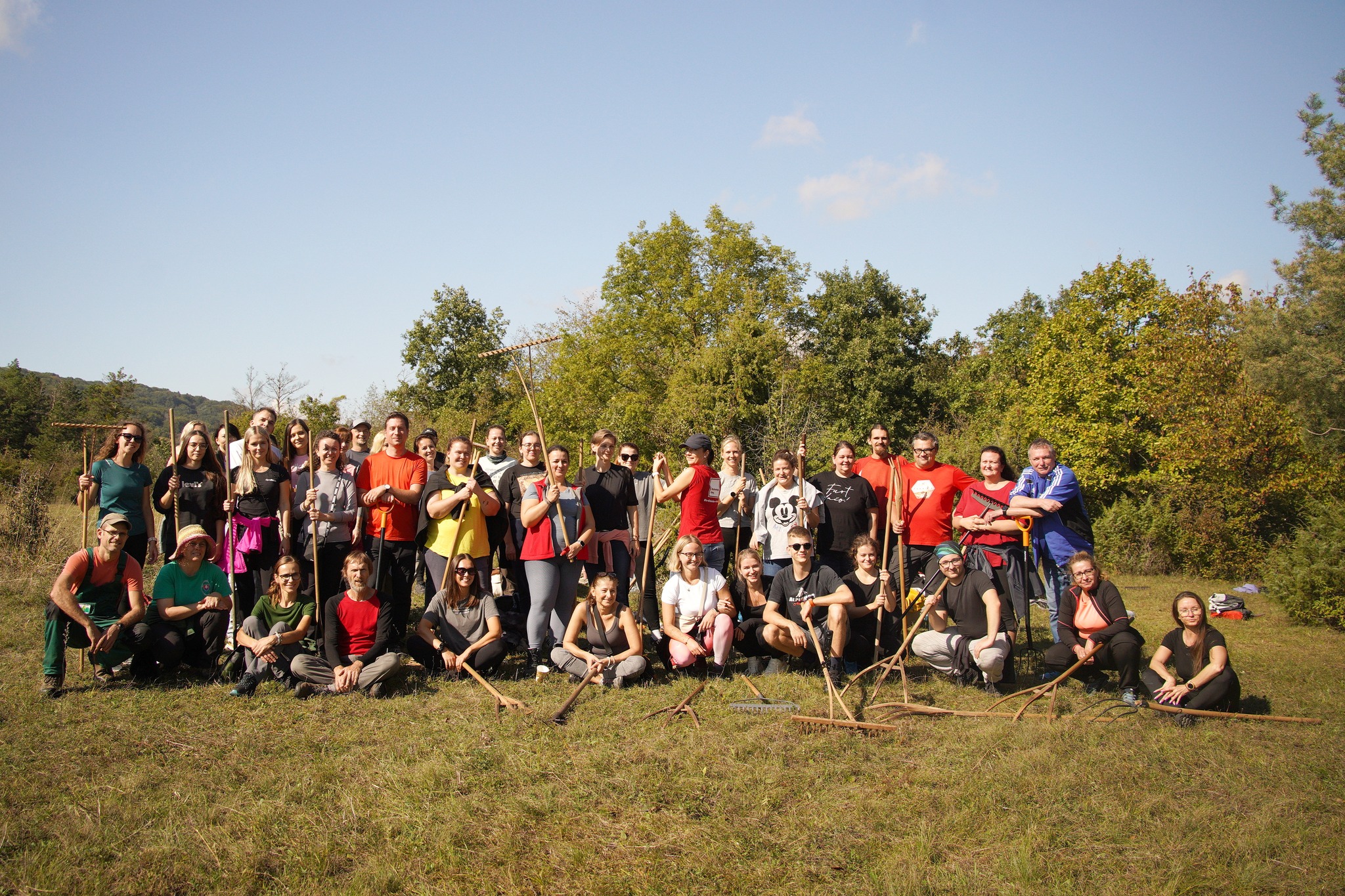
We organized a volunteer event for butterflies
Last week, together with the Záhorie Protected Landscape Area Administration, we organized a team-building event for employees of Kaufland Slovakia. We took them to the Kyseľová Nature Monument in Kopanice. This site is part of the project because it is home to rare butterflies such as the Clouded Apollo, the Sloe Hairstreak, and the Large Copper.

Butterfly workshops attracted 154 participants
Experts László Rákosy and Andrei Crișan conducted 2 workshops at Luna de Jos in August 2024. The first focused on moth diversity with 120 participants, while the second addressed protected butterflies in the cultural landscape, attracting 34 participants.
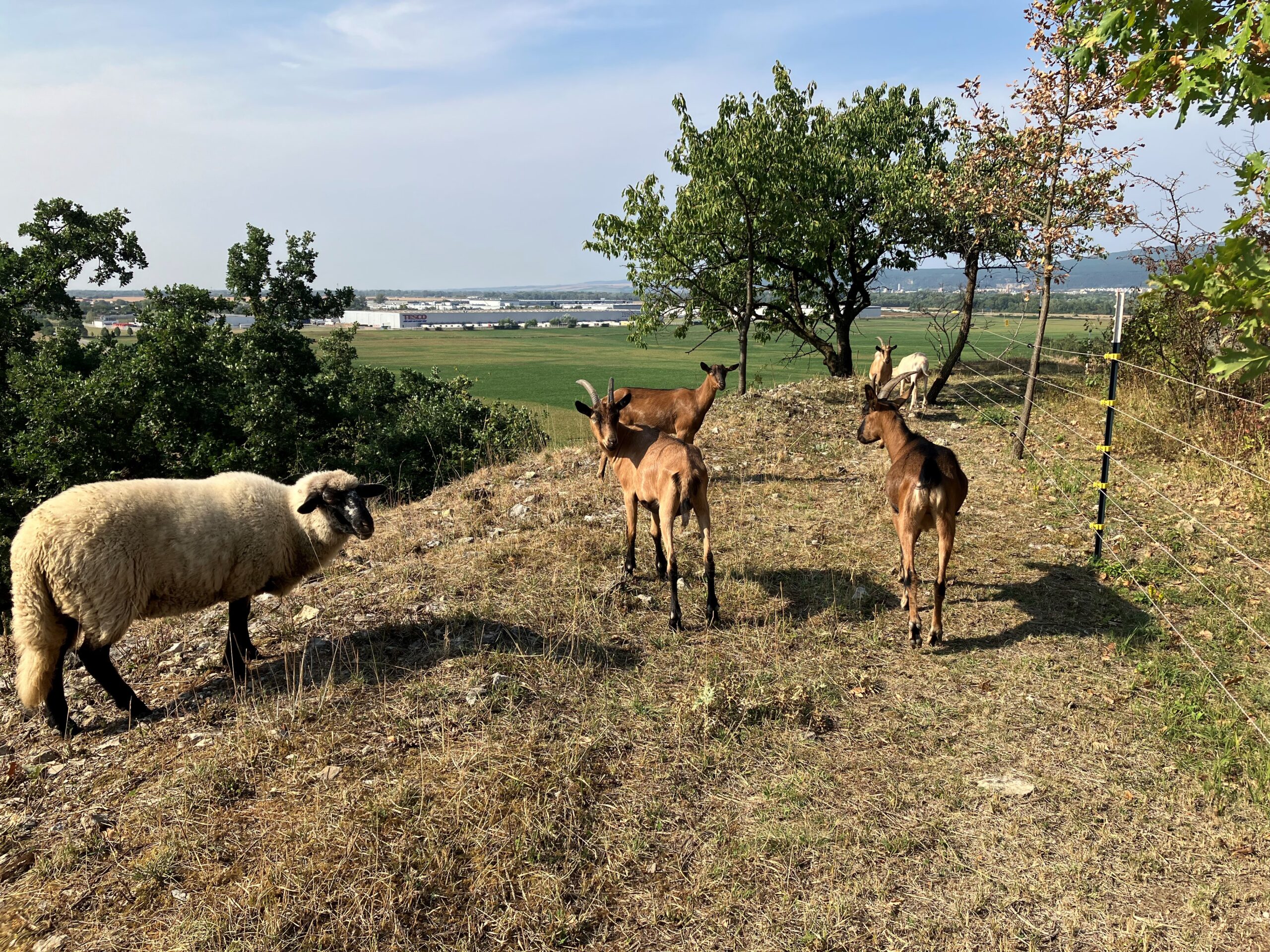
We continue to renew pasture in the nature reserve Beckovské skalice.
Two flocks of sheep and goats are roaming the meadows and hills of the Beckovské skalice nature reserve throughout the season. They extensively graze the meadow habitats, which our colleagues take turns replotting, so that they mosaically graze some of the vegetation and leave some of it.

Mossy Earth made a great video about our butterfly meadow
Mossy Earth made a great video about our project dedicated to butterfly conservation which they supported financially. Check it out!

The Southern festoon (Zerynthia polyxena) needs Aristolochia plants. We are planting them as part of the project.
The Southern festoon, a rare butterfly species of European importance, is bound to the warmest regions of Slovakia. The development of its monophagous caterpillars takes place on the Aristolochia plant. The restoration of these plants by direct sowing is possible, but time-consuming. However, they reproduce very well by rhizomes.
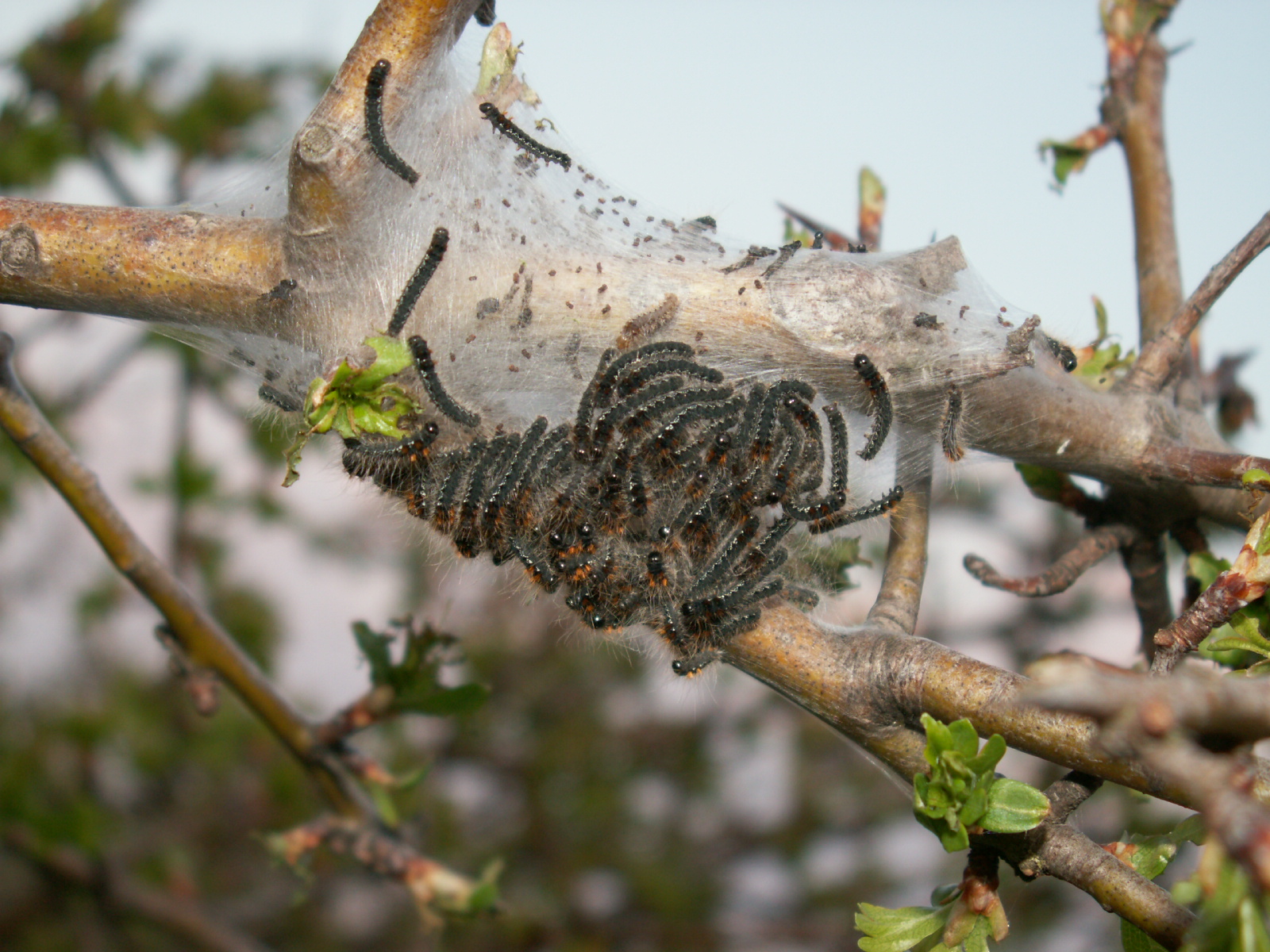
We mapped the caterpillars of the endangered eastern eggar (Eriogaster catax)
Although its Slovak name evokes a close relationship to blackthorn, the eastern eggar females lay eggs primarily on hawthorns. This butterfly is one of the few that lays its eggs in the fall and they spend the whole winter on the shrub.

Will you join us in butterfly collection?
In order to be able to implement targeted conservation measures for the protection and conservation of endangered butterfly species, it is necessary to know as many locations of these species and their host plants as possible at the current time. We are turning to you - nature lovers, who would like to help us with butterfly mapping.

We continued to clear the pastures in Beckovské skalice.
We didn't sit idle even this winter and continued to clear meadows and former pasture forests in the natural reserve Beckovské skalice from overgrown shrubs.

The Romanian project partner – Fundatia ADEPT Transilvania – carried out butterfly monitoring
Three expert teams carried out inventory/mapping of butterflies in the 10 Natura 2000 sites. This involved 37 transects, each surveyed during 3 different periods, in order to identify species with varying flight times.
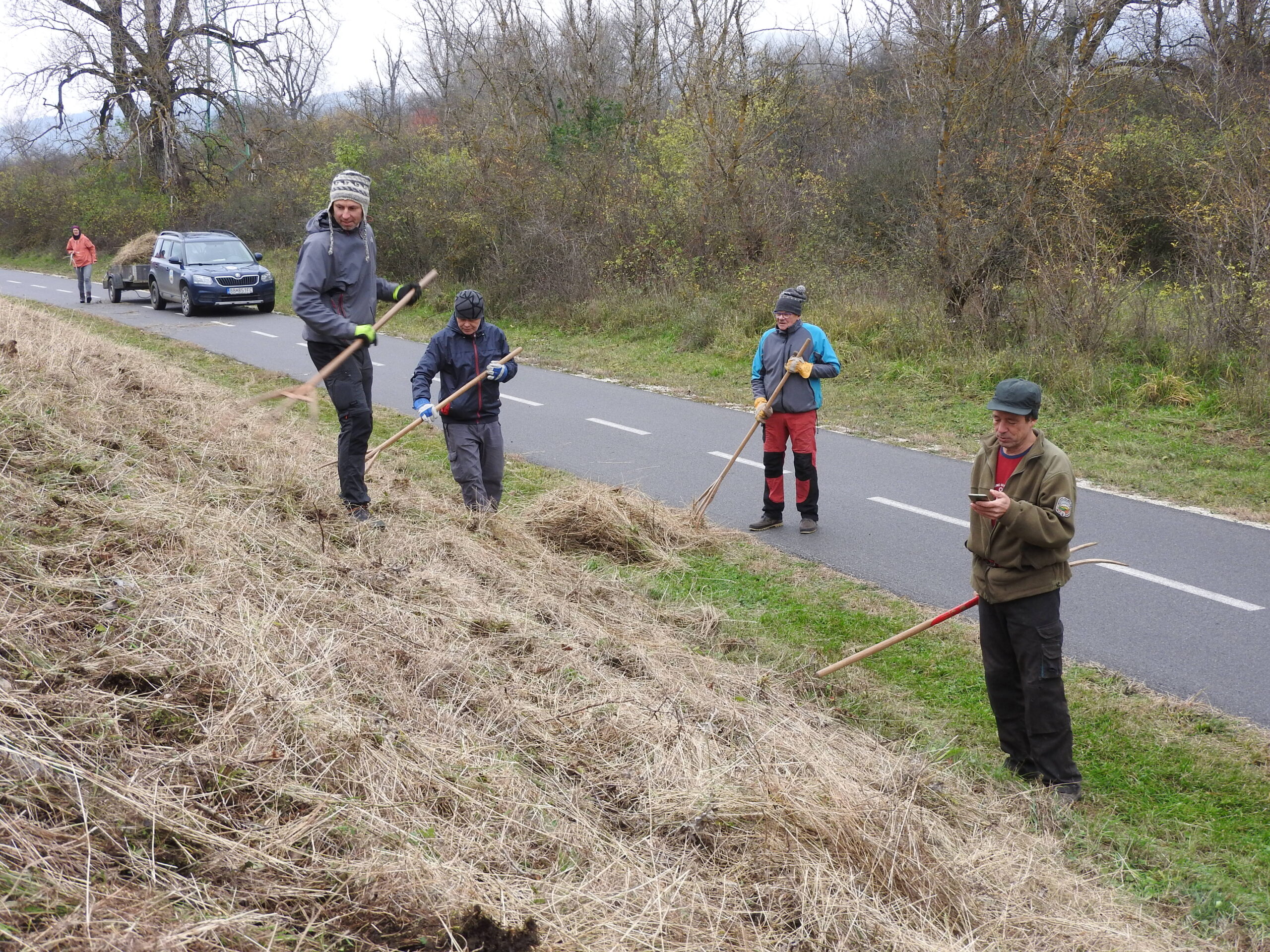
We adjusted the mowing of the dikes around the river Váh in a pollinator-friendly way.
The dikes in the basins of our rivers are important bio-corridors. They often serve as eco-stabilising features and centres of biodiversity in the surrounding, agriculturally intensive landscape.
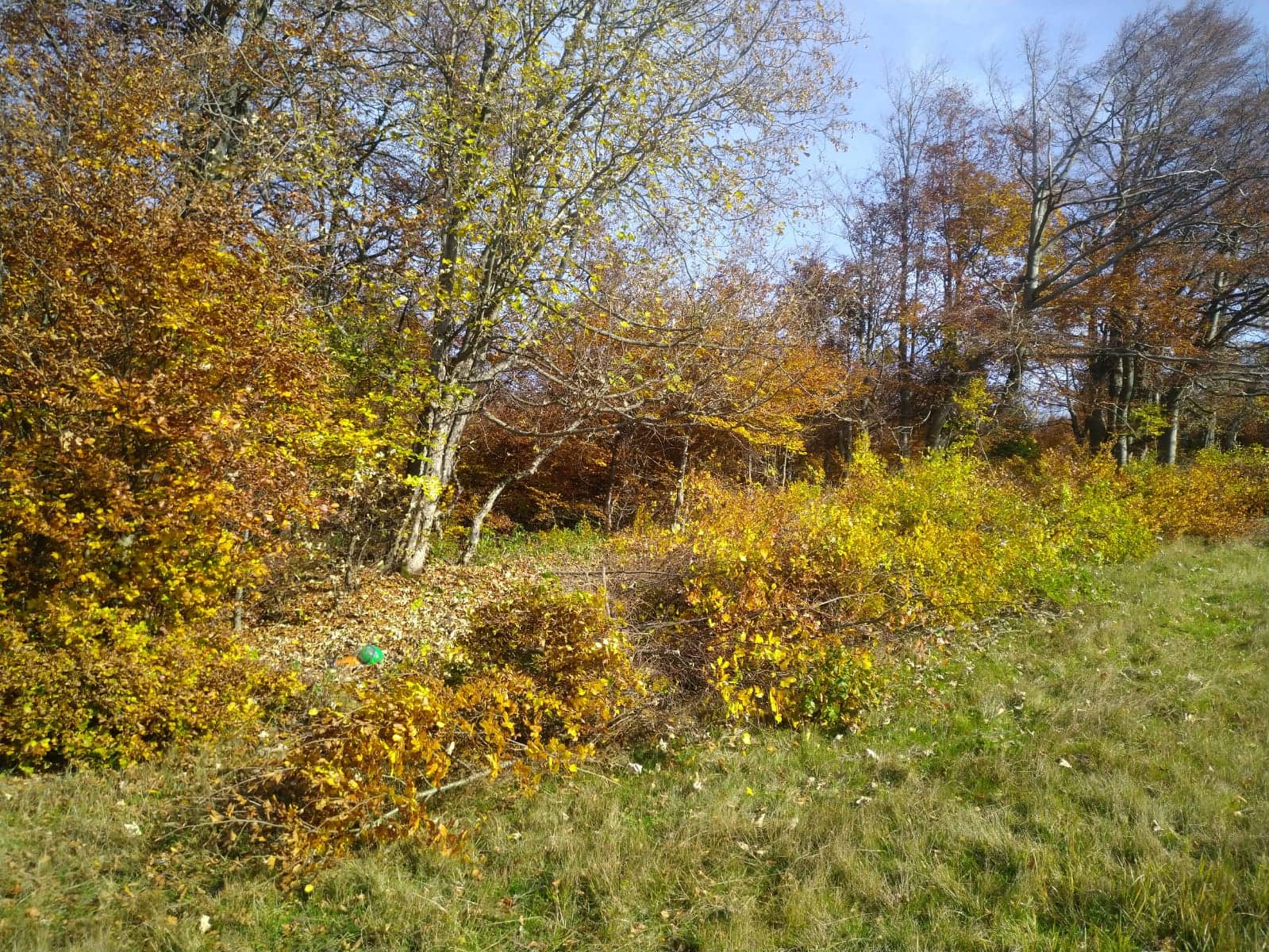
The boundaries between meadows and forests have never been as clear as they are today, to the detriment of butterflies
Many insect species are tied to a specific habitat at the forest-meadow interface. In the past, this boundary was nowhere as clear and straight as it is today. The transition from meadow to forest used to be loose, sometimes only a few trees, sometimes tens of metres wide and had a woodland character.
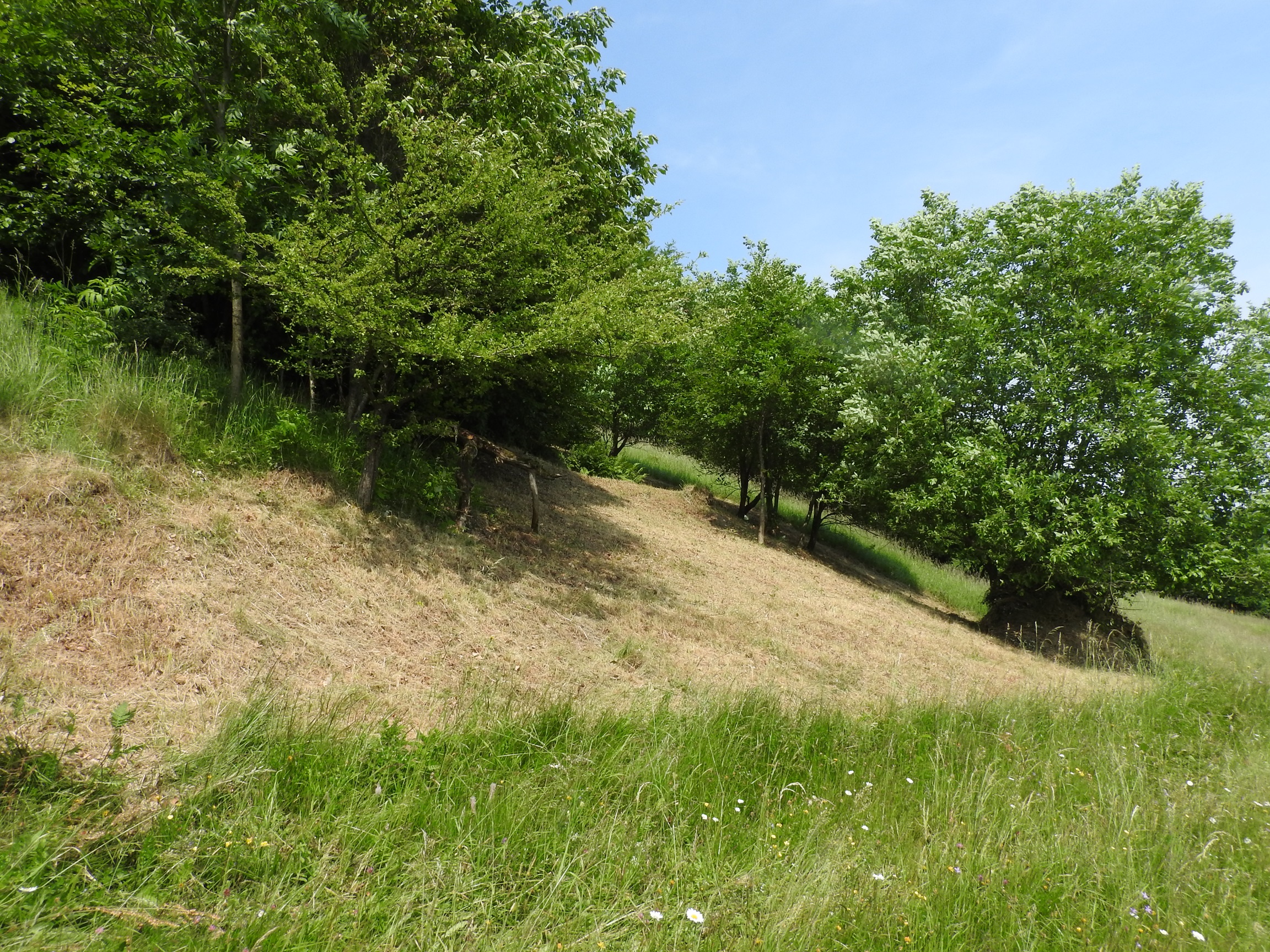
Butterfly management must be done with extreme caution
At this site in the area of European importance Holubyho kopanice, the management is made more difficult by the occurrence of the large copper (Lycaena dispar) and the Jersey tiger (Callimorpha quadripunctaria), each of which has different requirements, host plants and we want to accommodate them all. We really have to proceed slowly, working by hand, at different times and in small areas.
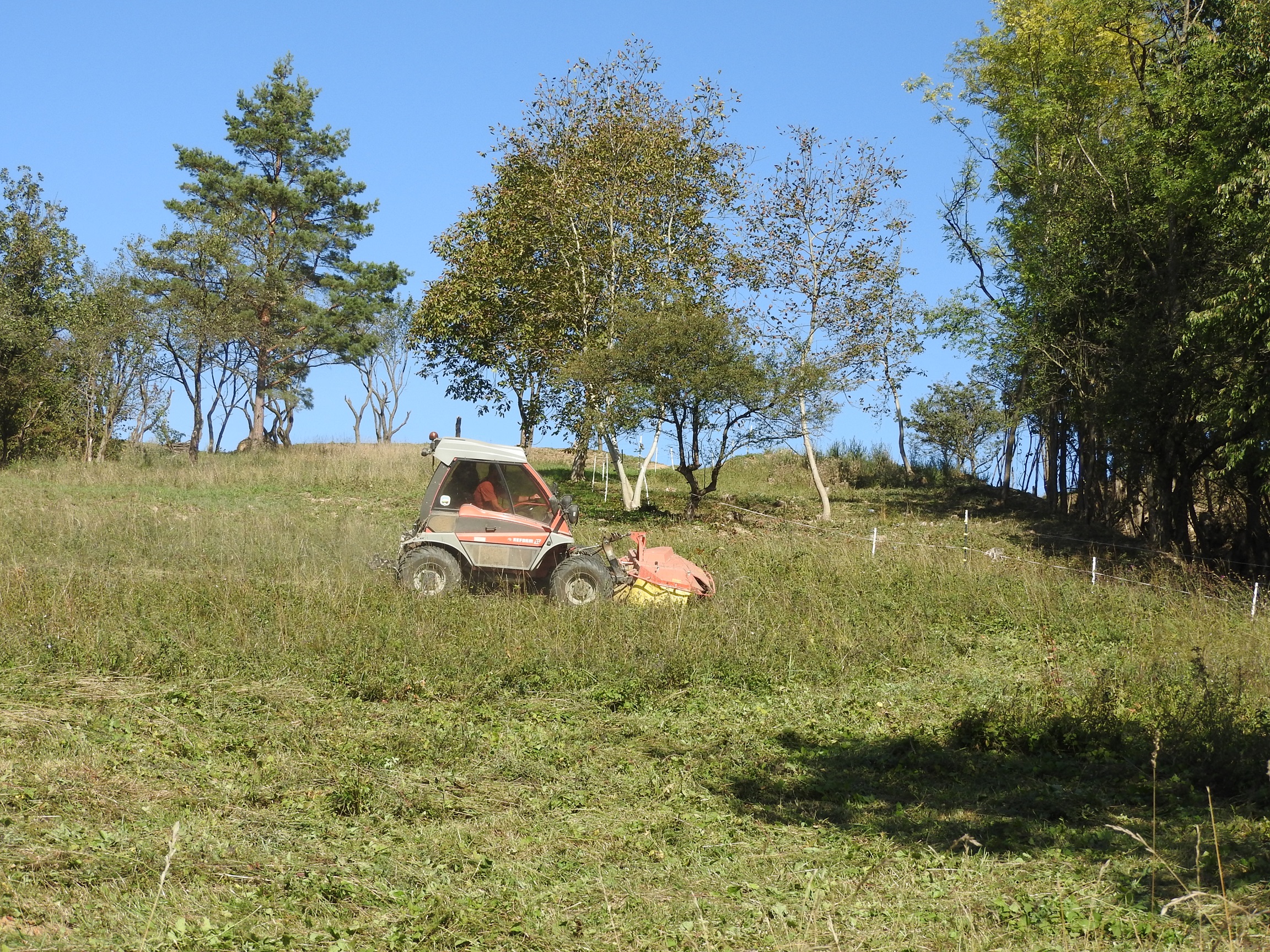
We use species-rich hay to encourage the growth of grass and blooming of cleared sites
In the area of European importance Beckovské skalice there are also colourful meadows, which were restored by the State Nature Conservancy in our joint project LIFE Butterflies CR-SR, which ended in 2016. They have been mowed annually since then by the administration of the White Carpathians Protected Landscape Area.
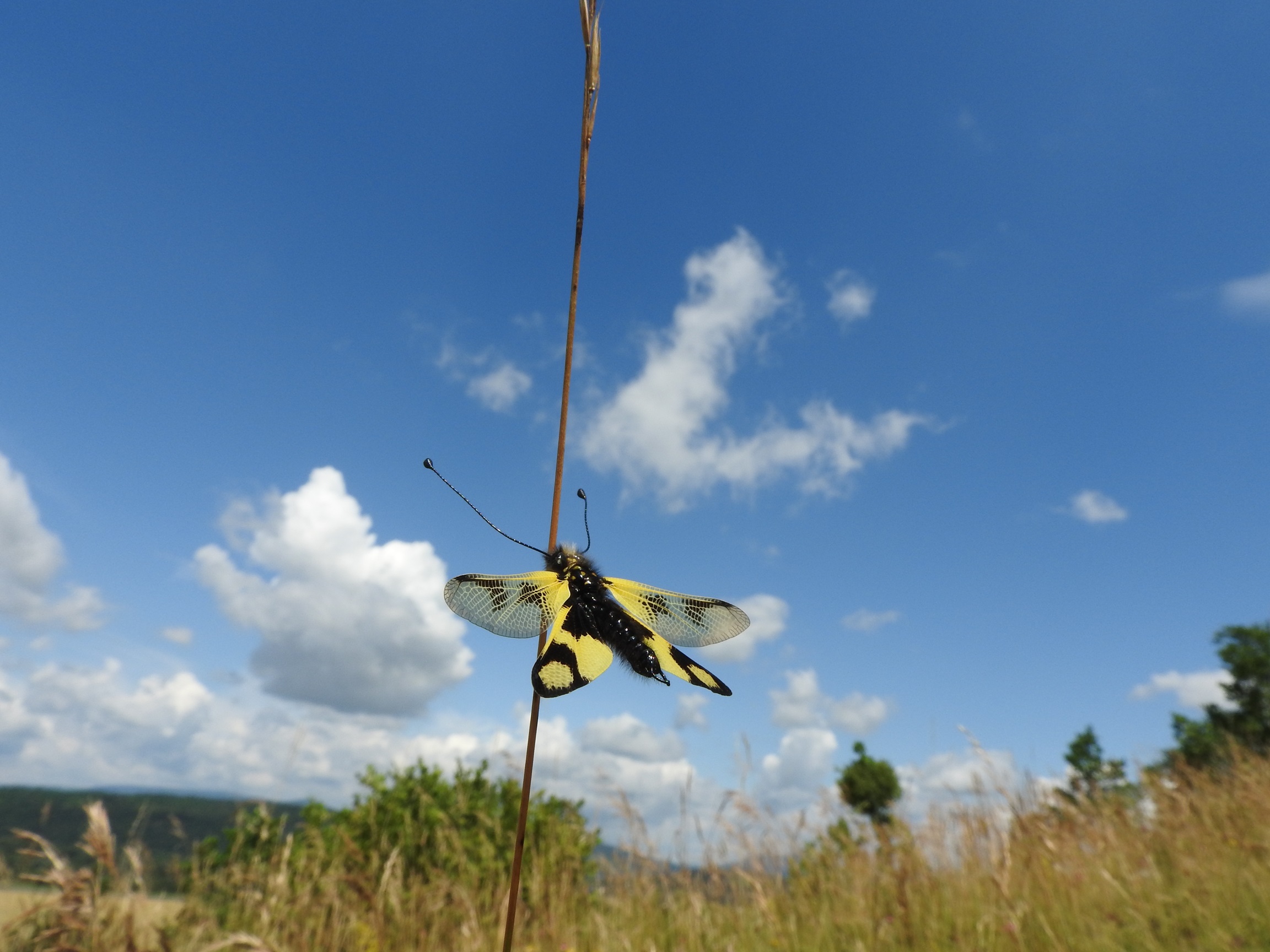
The site Beckovské skalice was visited by the rare Macaronius owlfly (Libelloides macaronius)
This confirms that some species are already discovering that we've cleaned this site up. Do you still remember what "hilltopping" is? This summer we were delighted to see this animal, the Macaronius owlfly (Libelloides macaronius), which seeks out unvegetated elevated areas within the range of its occurrence for mating flights.
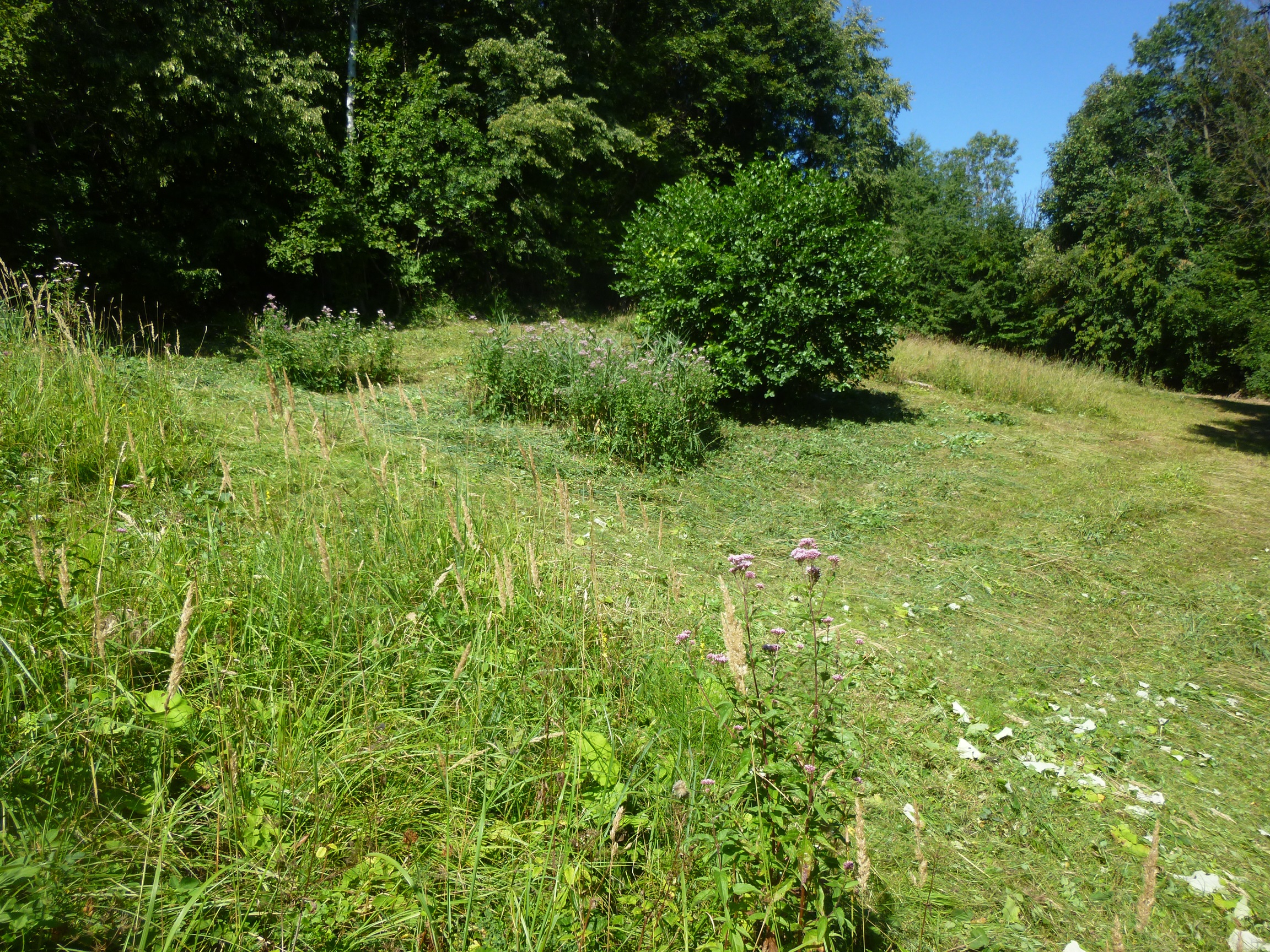
Wetlands and their significance for butterflies
Small-scale wetlands in agricultural landscapes are not only important for amphibians, birds and mammals, but are also home to many species of butterflies and insects. Orchids and other rare plants often grow here. In Holuby's Kopanice, a site of European importance, we also find burnets (Sanguisorba) which are host plants to the rare Blues butterflies.
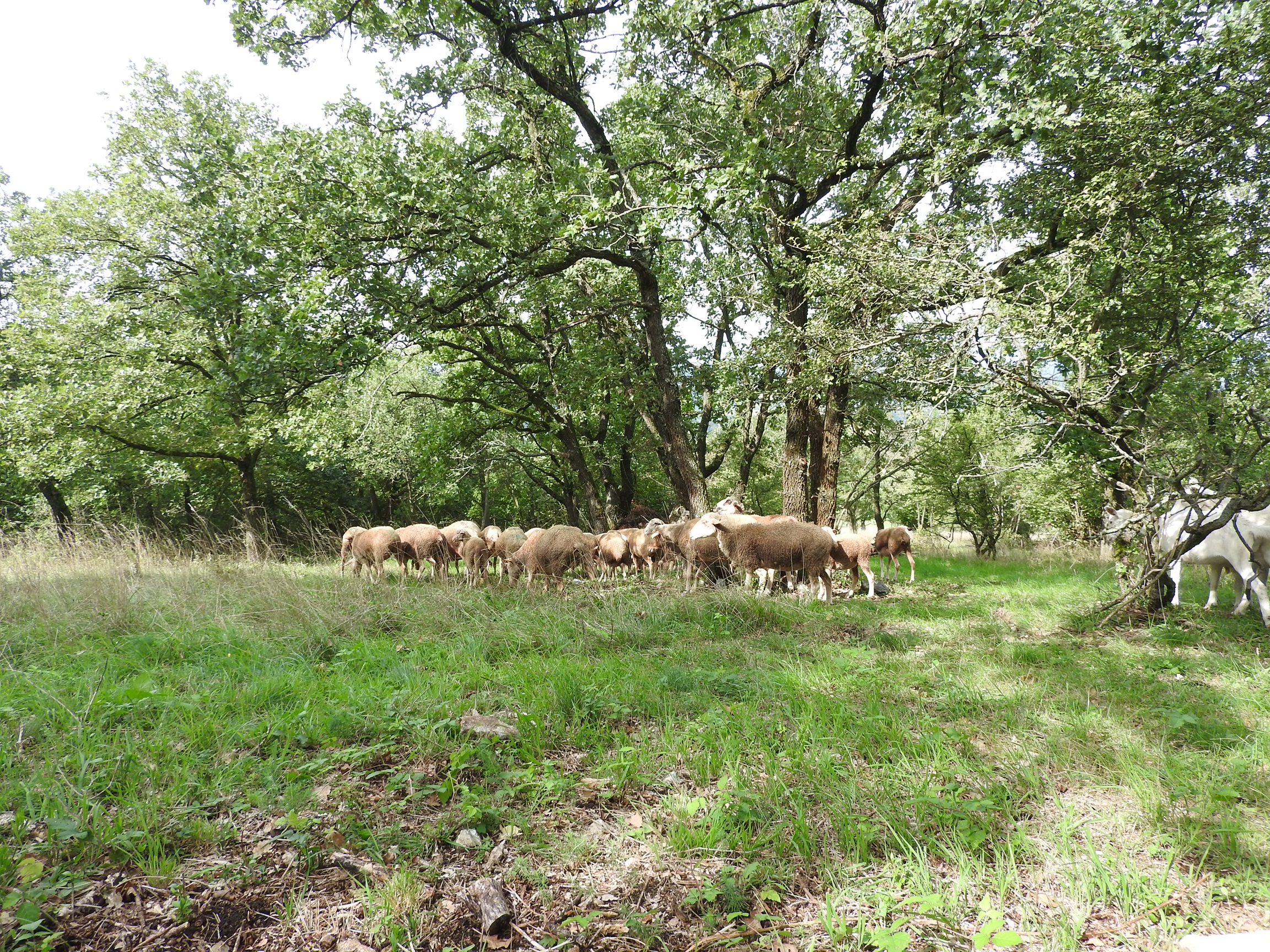
We began pasture in the Beckovské skalice nature reserve.
In Beckovské skalice we have started grazing goats and sheep on rocky and less accessible sites in cooperation with Salaš Beckov. Beckov Farm, on the other hand, grazes cows on flat ground. This will create different grazing areas with different plants, which in turn are preferred by different insects.
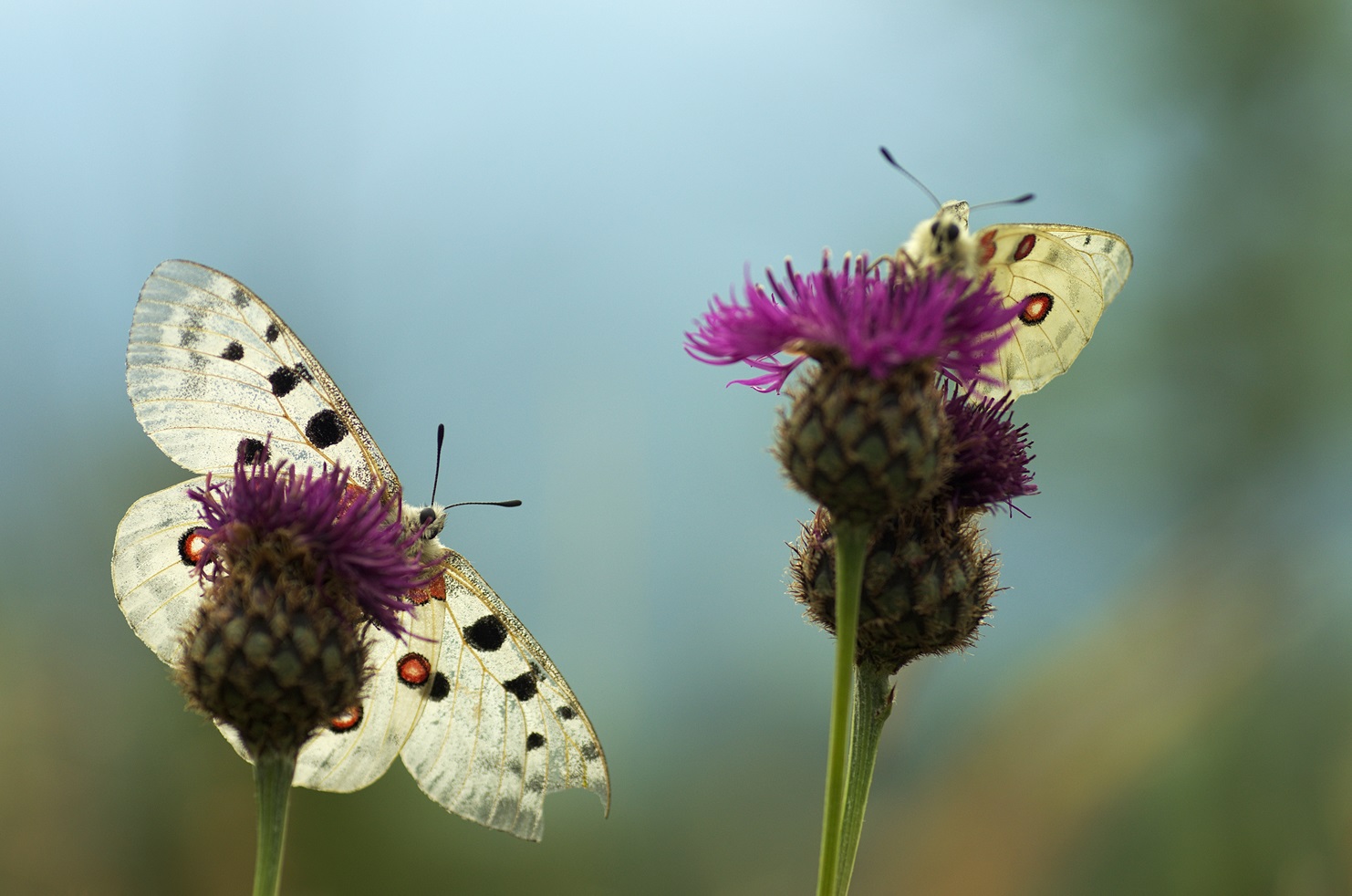
We exposed the rock cliffs on the Vápeč hill for the critically endangered Apollo butterflies.
In the past, foresters in our country reforested many rocky hills, mainly with stands of black pine. In addition, they have stopped pastures which have become overgrown with shrubs. This is how the Apollo butterfly (Parnassius apollo) lost its habitat in most of its locations of occurrence in Slovakia, thus recording more than 90% decline! in abundance.
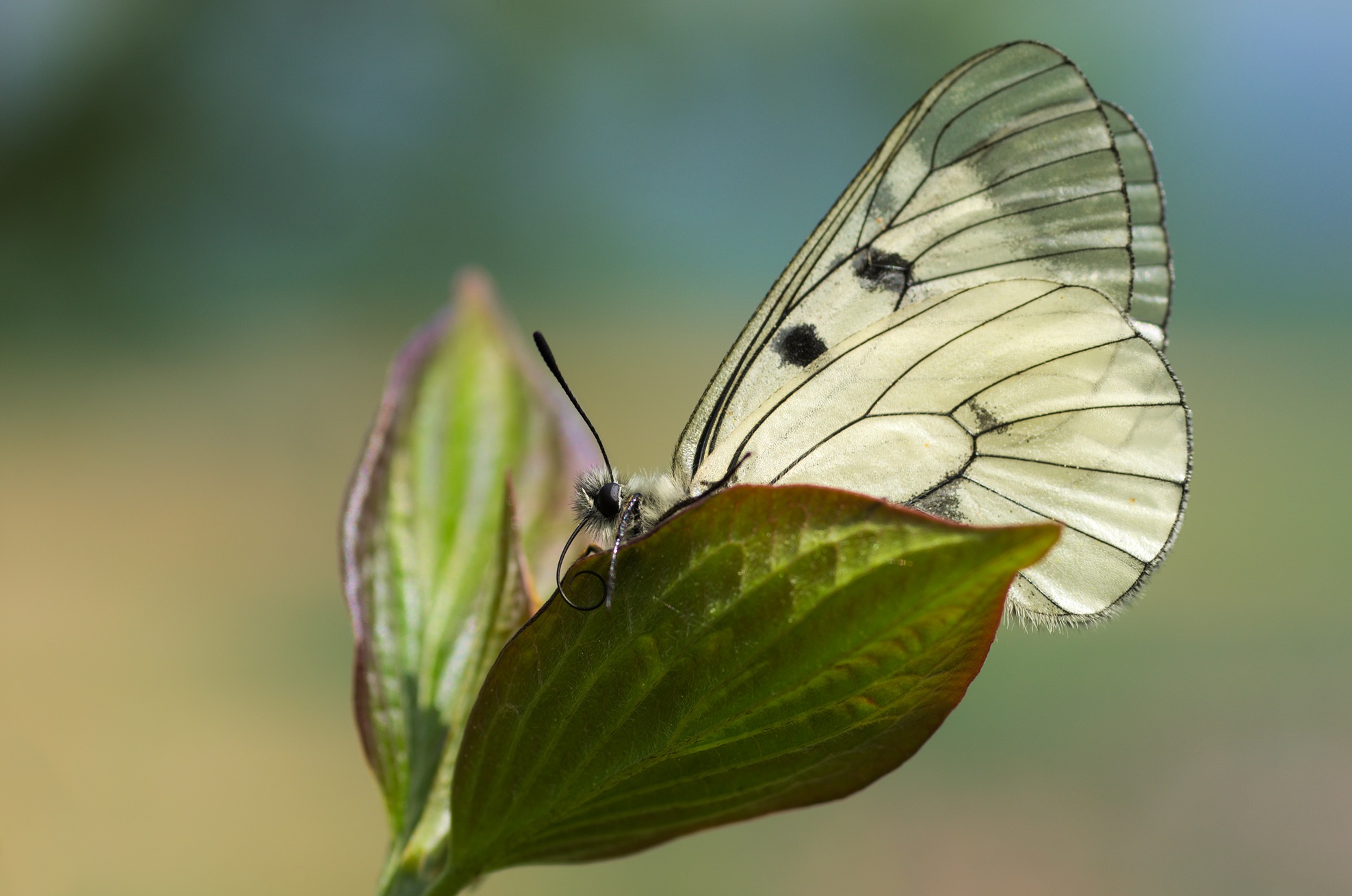
We are monitoring the host plants of the clouded Apollo caterpillars (Parnassius mnemosyne).
We've made arrangements for clearing and grazing at the site of European importance Holubyho Kopanice. However, we will not begin until autumn, as we are searching, marking and planning at this time. The Corydalis plants that grow here are host plants for the caterpillars of the clouded Apollo butterflies (Parnassius mnemosyne).
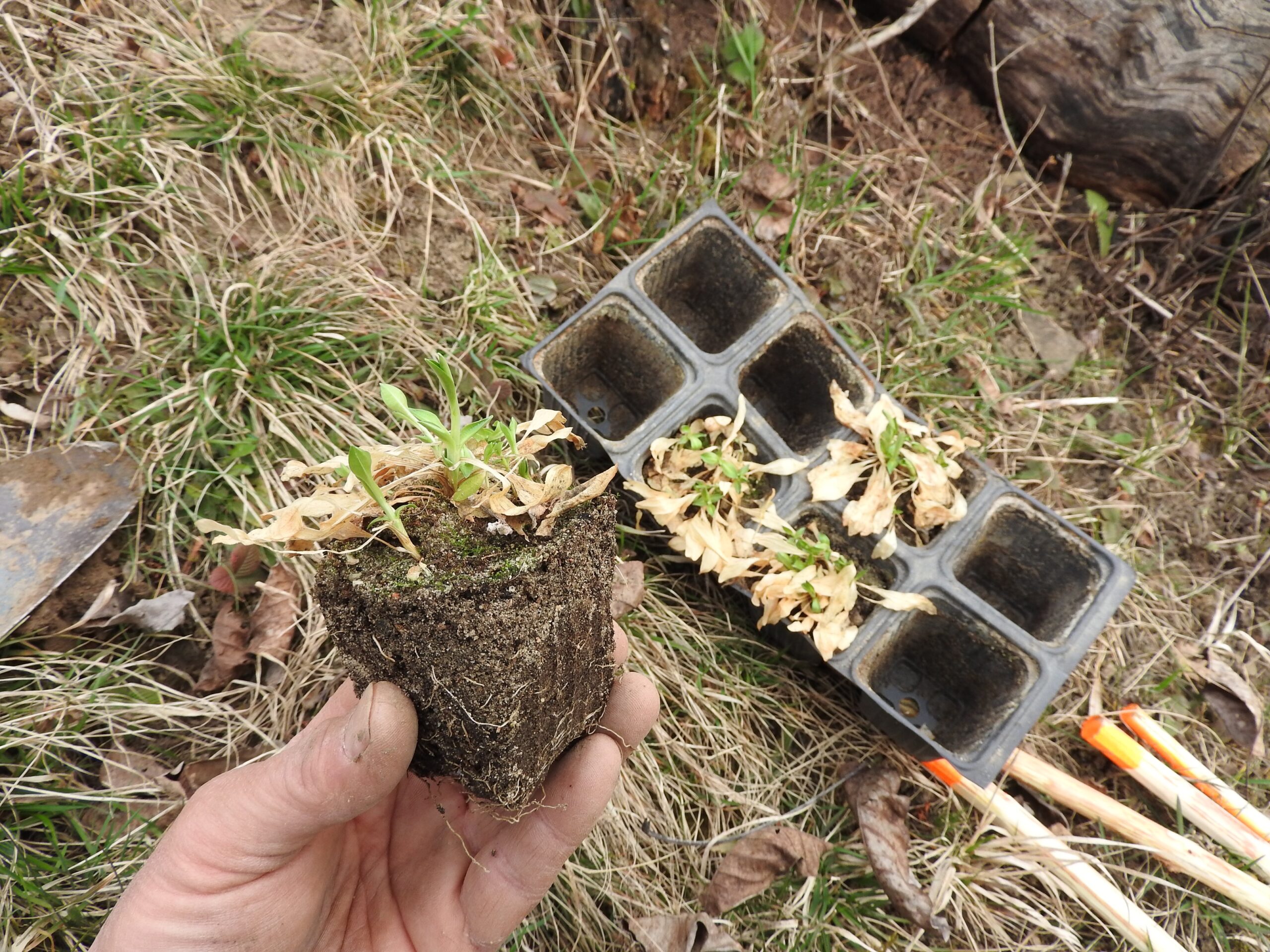
Planting the host plants for butterfly caterpillars.
Butterflies are fragile animals by nature, and they need stable natural conditions for their survival. Stability vs. fragility need to complement each other in the butterfly world. They need a very specific combination of habitats for their survival. Therefore, in order for caterpillars and therefore butterflies to survive, their so-called host plants are important.
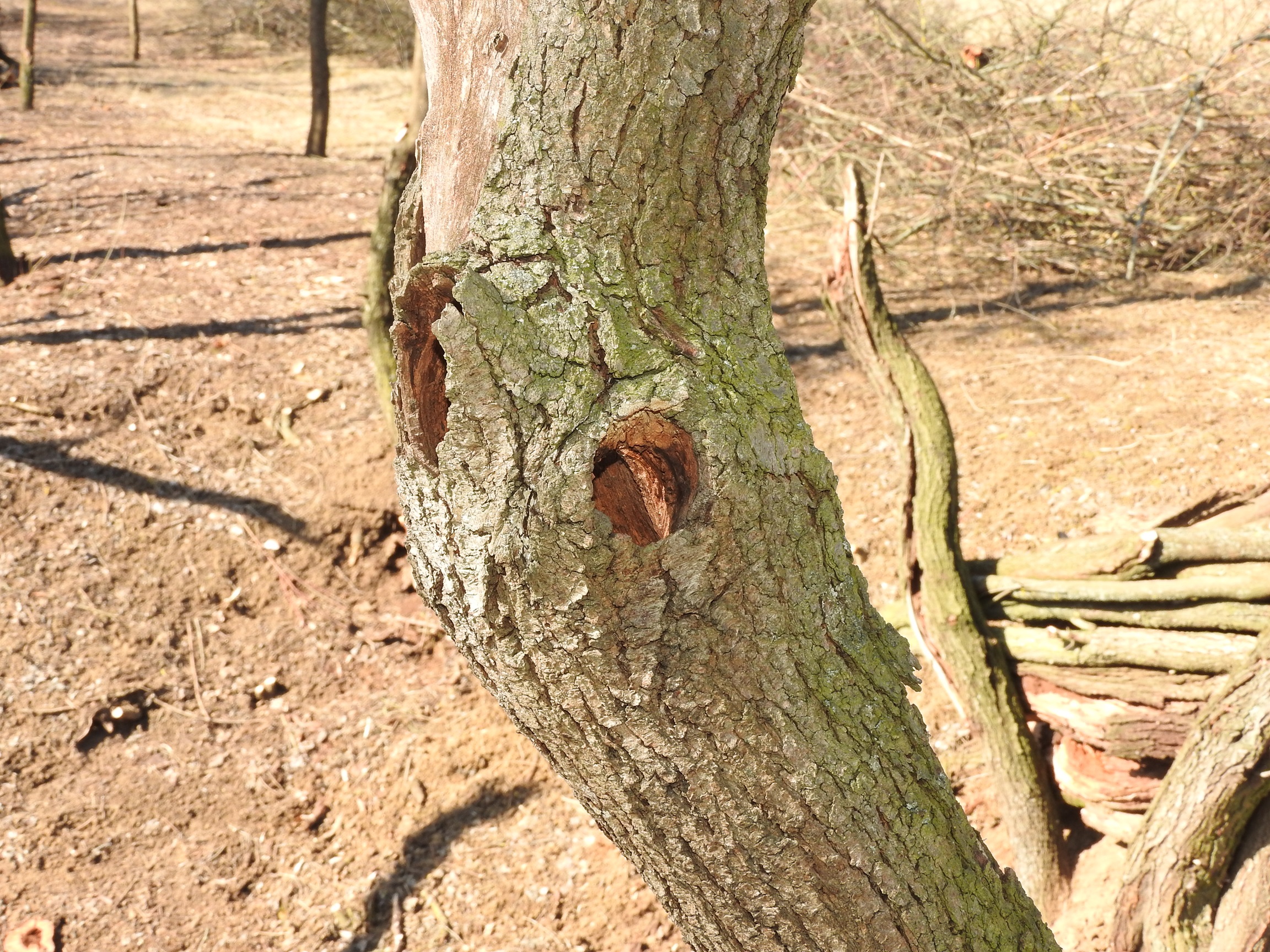
Solitary trees are important for butterflies
Solitary standing trees are an important eco-stabilising element in the landscape. The preservation and restoration of old fruit trees serves the function of saving and conserving our native gene pool, but they also provide suitable habitats for a range of invertebrates, cavity nesters and dormice in their cavities.
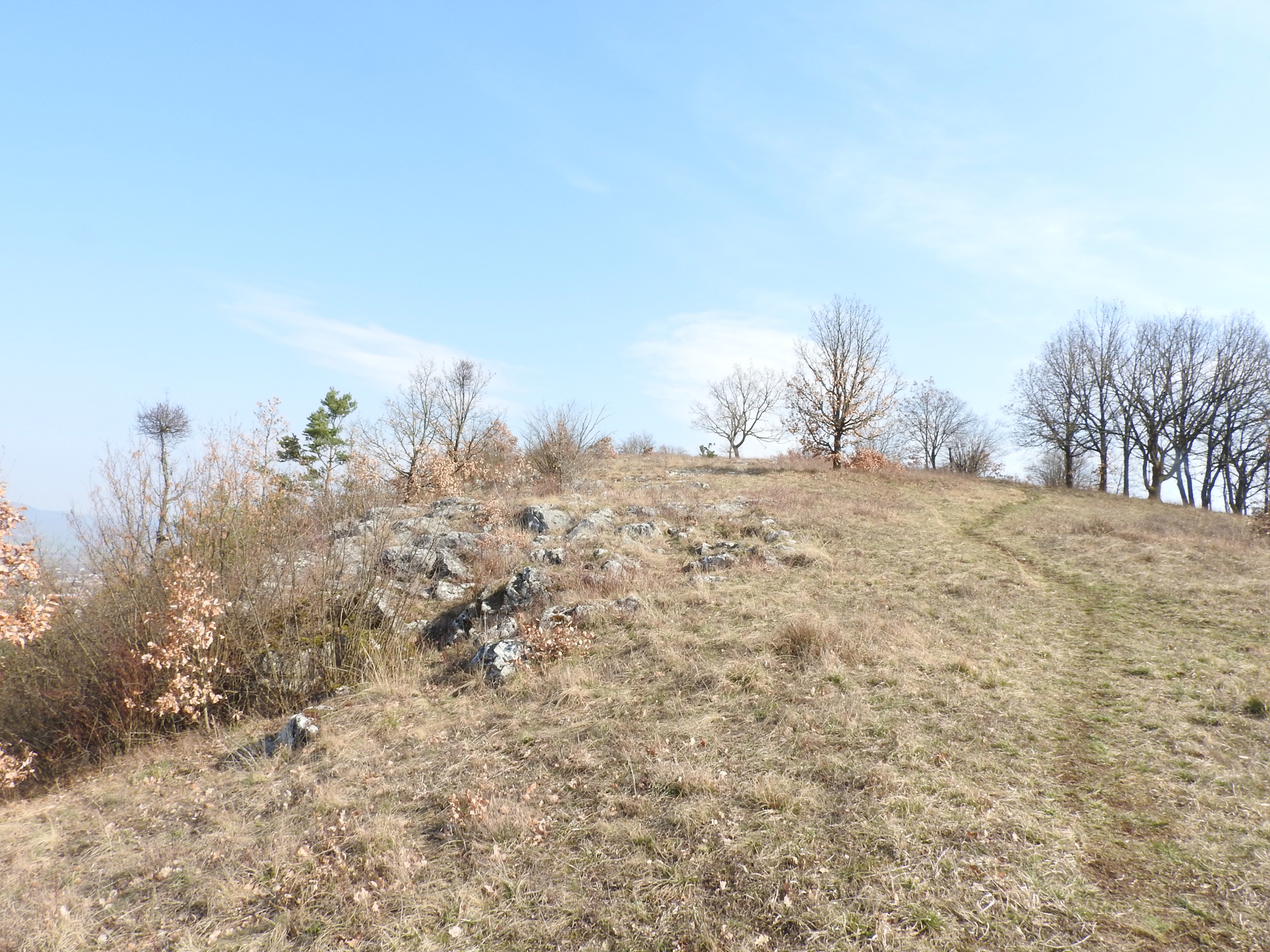
The top of the Beckovské skalice site is suitable for “hilltopping” after clearing.
"Hilltopping" is a mating strategy in which insect adults seek out elevated, unvegetated sites in the landscape where their courtship flights and mating take place.
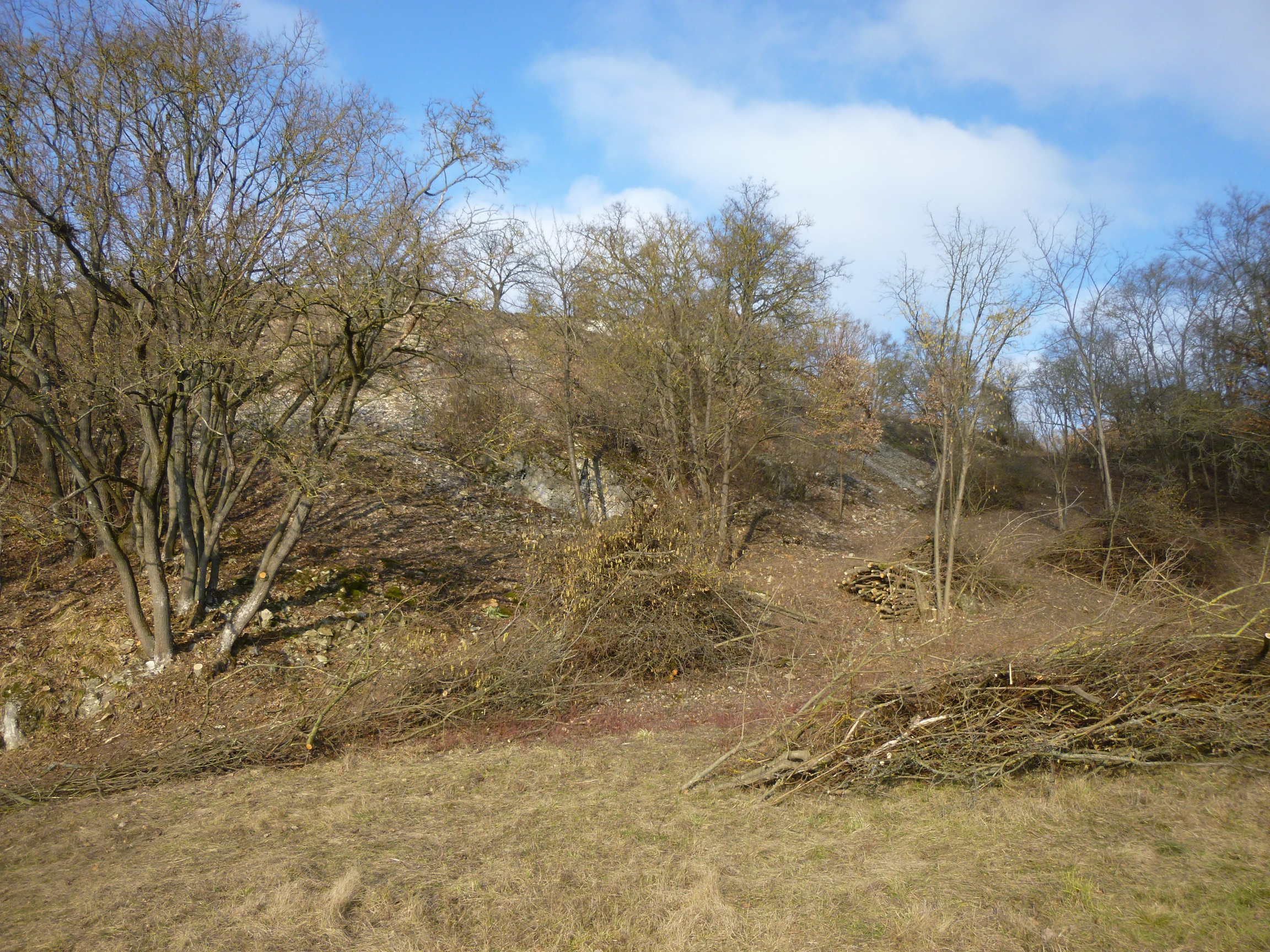
We’ve prepared suitable butterfly habitats in Beckovské skalice.
In the area of European importance Beckovské skalice we cleared the piles of rubble and rocks in the old stone quarry. The piles are made of rubble and rocks left behind after mining. Such spots - when sufficiently illuminated and covered with sparse vegetation cover and exposed substrate - are habitats not only for xerophyte butterfly species, but also for grasshoppers, spiders and Hymenoptera species.
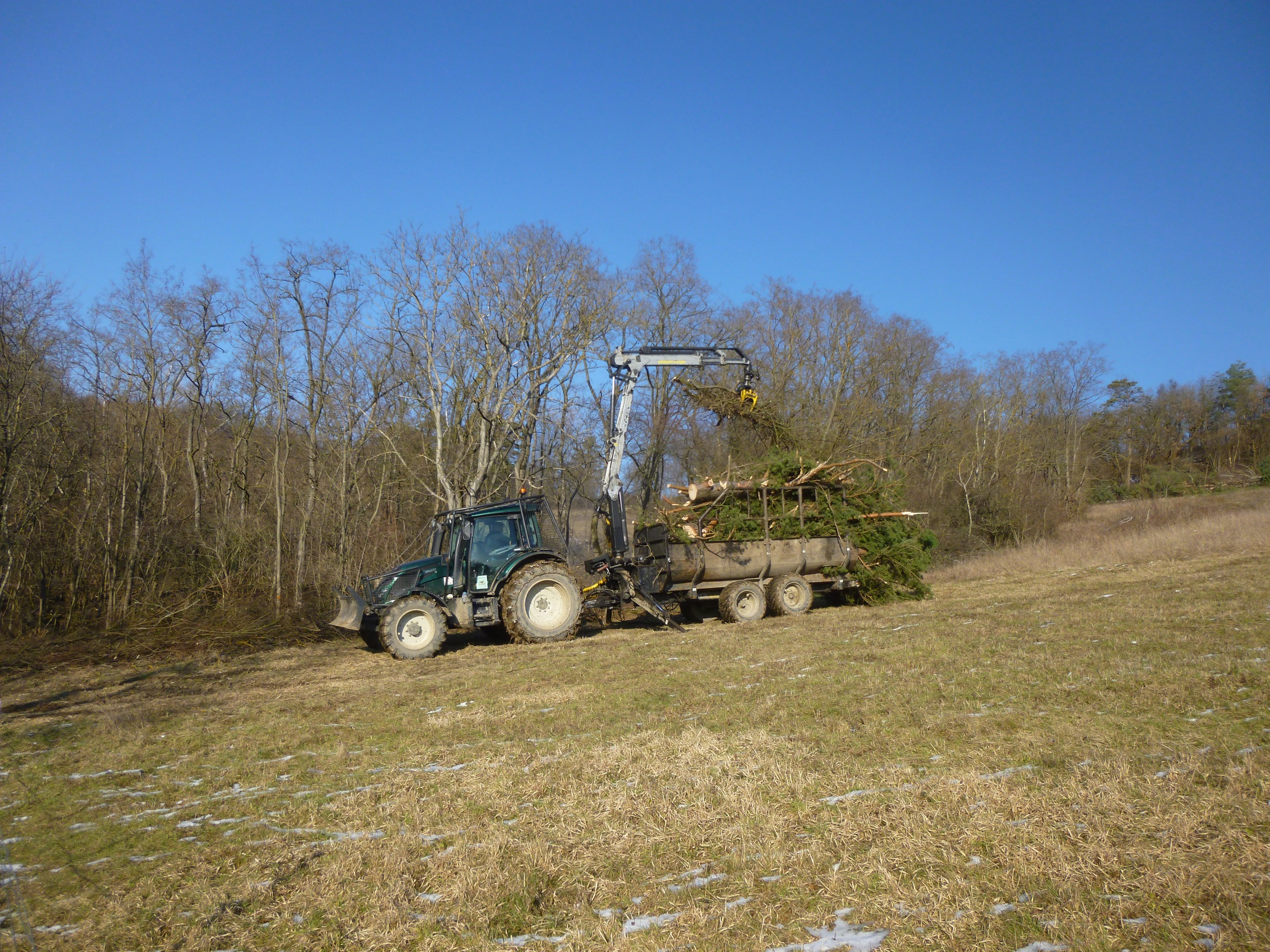
Clearing sites in the Beckovské skalice area vol.1
Most species of butterflies, as well as other pollinators, are unable to survive for long periods in small isolated habitats that become overgrown with woody vegetation that prevents access to light.
Project title: Developing best practices in butterfly conservation in Central and Eastern Europe
Project sector: LIFE, Nature and Biodiversity
Project acronym: LIFE Metamorphosis
Project code: LIFE21 NAT/SK/101074487
Expected start date: 01/09/2022
Expected end date: 31/03/2029
Total project budget: EUR 5,498,521.28 (60 % EU financial contribution)
Project partners: BROZ, State Nature Conservancy of the Slovak Republic, Fundatia ADEPT Transilvania, Őrségi Nemzeti Park, Institute of Zoology of the Slovak Academy of Sciences
Focus of the project:
The project is focused on best practices in butterfly conservation that were subject of several projects carried out across Europe, adding innovation activities as well. Its acronym Metamorphosis refers not only to the complex life cycle of the target species, but also to positive changes of their habitats as well as transformation of policies, target groups practices that will lead to halting the decline of selected endangered species and pollinators in general.
The main causes of the decline of butterfly populations in the project areas are degradation and disappearance of highly diverse ecosystems, and abandonment of traditional forms of land use. Modern farming is responsible for creation of large, homogeneous grasslands for intensive grazing and uniform management by mowing, but it also degraded unique transition and ecotone habitats between forests and grasslands, where a great variety of butterfly species thrive. Intensification of farming is also responsible for the rapid decline of wetlands and wet meadows, by draining and ploughing wet meadows and removal of small water bodies used as watering places for animals. On the other hand, many localities were abandoned due to inaccessibility to agricultural machinery and are currently overgrown by successive vegetation. The project’s target species and habitats were also adversely affected by changes in forestry management, primarily by the planting of inappropriate trees (e.g. Pinus nigra, P. sylvestris, Robinia pseudoacacia), the destruction of original lowland forests containing Fraxinus and Ligustrum, or abandonment of grazing in forests, which led to the creation of dense stands not suitable for the occurrence of target species.
The main project objectives:
- Restoration of habitats – removal of successive vegetation, grazing and mowing of grasslands, creation of wide edges between grasslands and forests, creation of wetlands and patches of bare soil, planting of food plants
- Restoration of extinct local populations of 6 butterfly species through restitution (release of bred individuals) or translocation of individuals from sufficiently strong populations
- Improving the network of protected areas for butterflies by including three new localities in the NATURA 2000 system and ten other sites as “insect biodiversity hotspots” under national law
- Acquiring relevant scientific data on the target species, especially on the genetic structure of the populations targeted for restitution
- Mapping of population occurrence with emphasis on searching for possible populations of Colias myrmidone in Slovakia and Romania and “insect biodiversity hotspots” for designation of new protected areas
- Ensuring long-term management of habitats and sustainable use of their services in cooperation with local stakeholders and communities
- Development of an innovative Biodiversity credit scheme for butterflies in Romania
- Increasing the awareness of stakeholders and public regarding target species, conservation measures and their importance by using projects on mapping of butterflies and other dissemination activities (school programme, films, volunteer events, guided tours, information panels)
- Replicating the best practices in conservation of butterflies with stakeholders in localities not targeted by the project
- Spreading the knowledge, know-how of the project in different localities, regions and EU states where target species occur, participating in events, conferences and networking visits
- Developing (SK and RO) and consolidating (HU) links to the European Biodiversity Monitoring Scheme (eBMS)

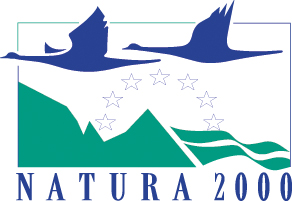
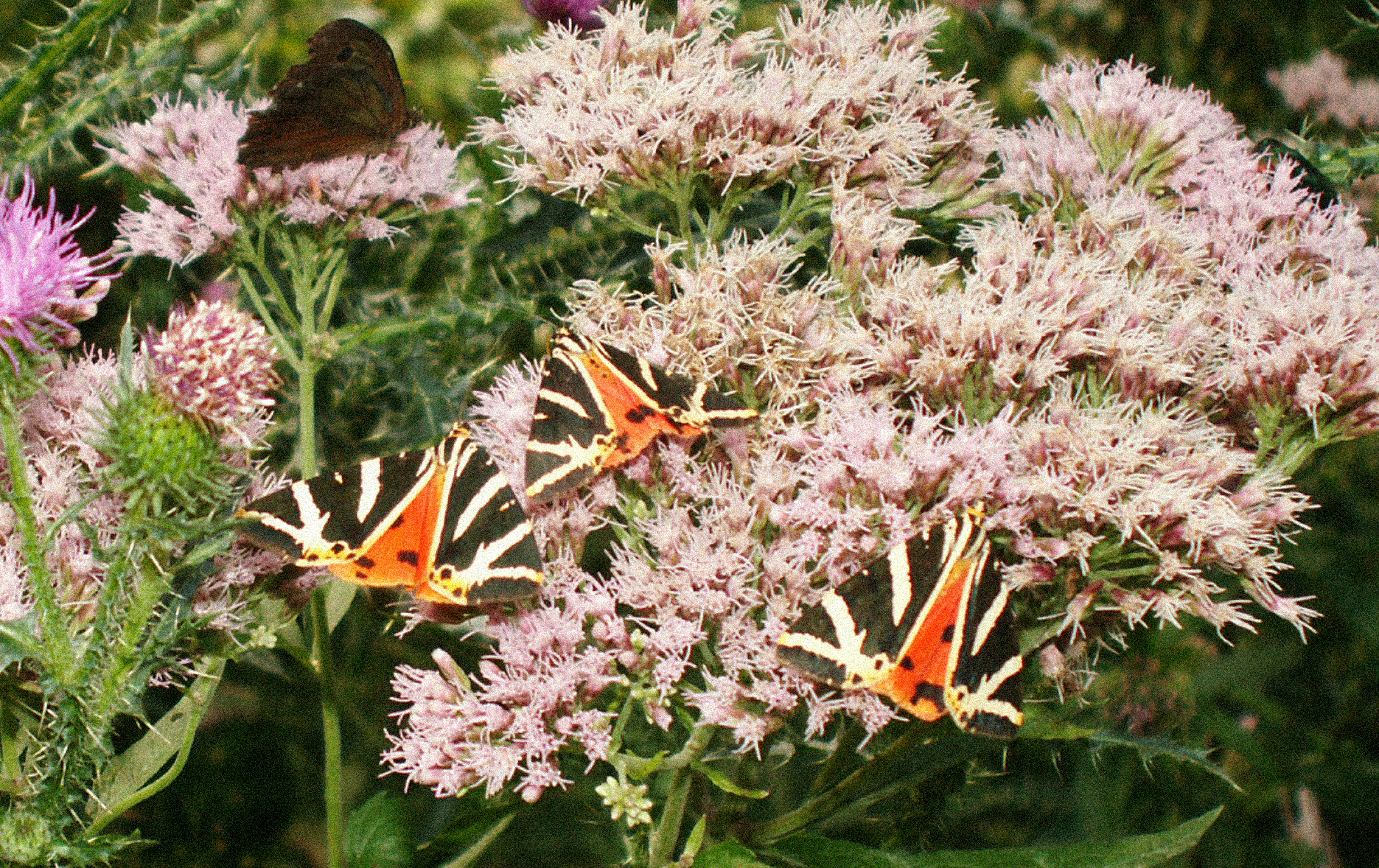
Jersey Tiger (Callimorpha quadripunctaria)
Adults are active during the day and can be observed especially in July and August on the flowers of Sambucus sp. and Eupatorium sp.. Larvae are polyphagous and feed on numerous low-growing plants. It is still a locally common species, occurring mainly in valleys and on the edges of forests. However, it is necessary to ensure suitable habitats for the existing populations.
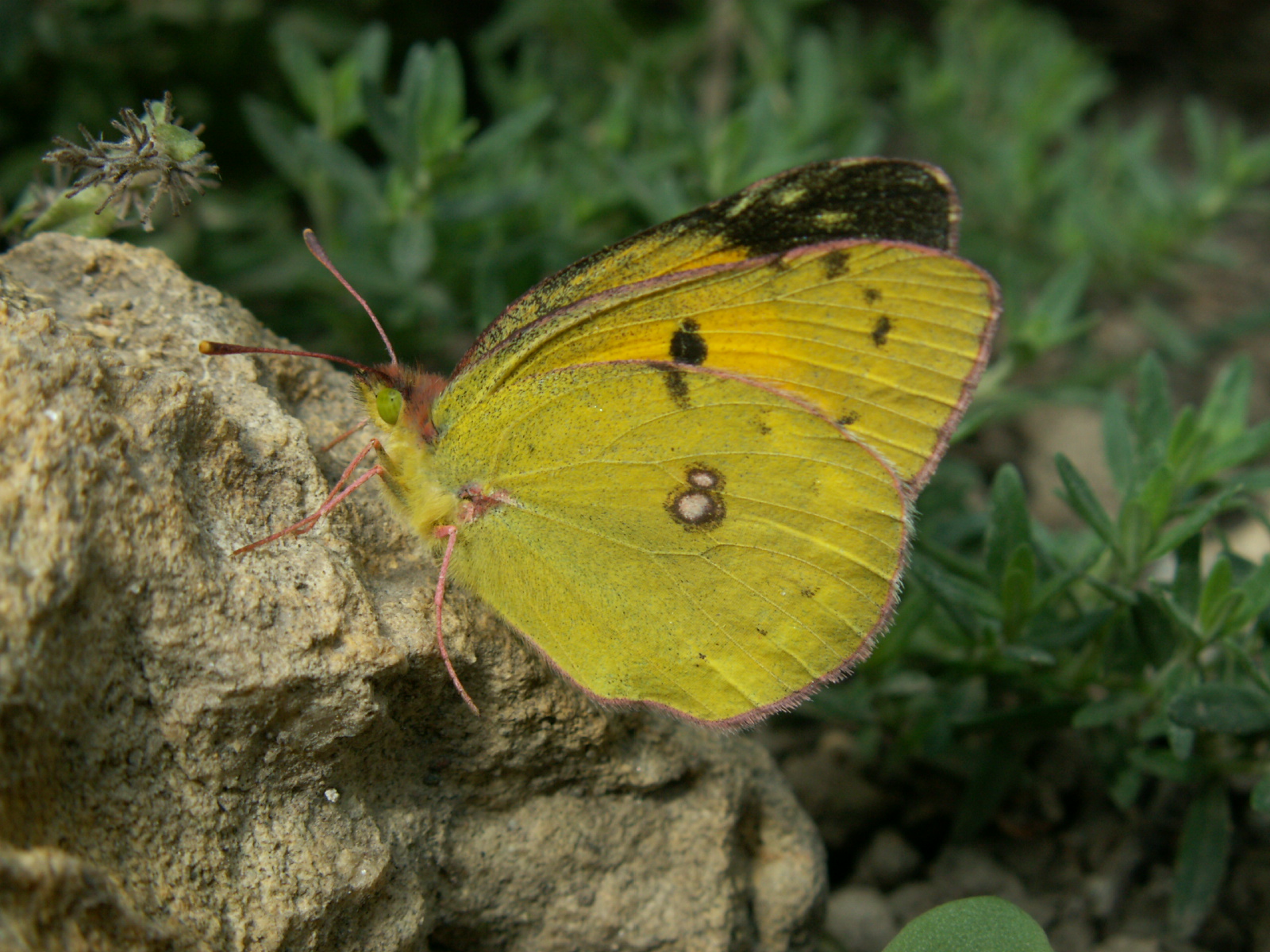
Danube Clouded Yellow (Colias myrmidone)
The most endangered species of the project, the originally widespread Eastern European butterfly, was known from the Danube basin to Western Asia. It has become extinct in most of Central Europe and is critically endangered in the EU. In western Slovakia, it was widespread in a metapopulation that occurred in most of the territory of western Slovakia. Today, it is threatened with extinction with isolated occurrences in a few locations in the project area. In Romania, it disappeared from many locations, surviving only in the Apuseni mountains and in the Giurgeu-Ciuc basin. It has already become extinct in Hungary.
Butterflies fly in two generations: May-June and July-August on lowland meadows and slopes. The host plant for the caterpillars is Chamaecytisus sp. Its decline is caused by the destruction or change of habitats, the increase or abandonment of land use, overgrazing or, conversely, the complete abandonment of traditional grazing, climate change, afforestation with non-native trees (such as Pinus nigra and Robinia pseudoacacia) and intensive large-scale mowing of meadows at the same time.
It is necessary to continue the protective measures for this species in Slovakia, which relate to appropriately timed extensive mowing and grazing and to ensure the still numerous but declining populations in Romania.
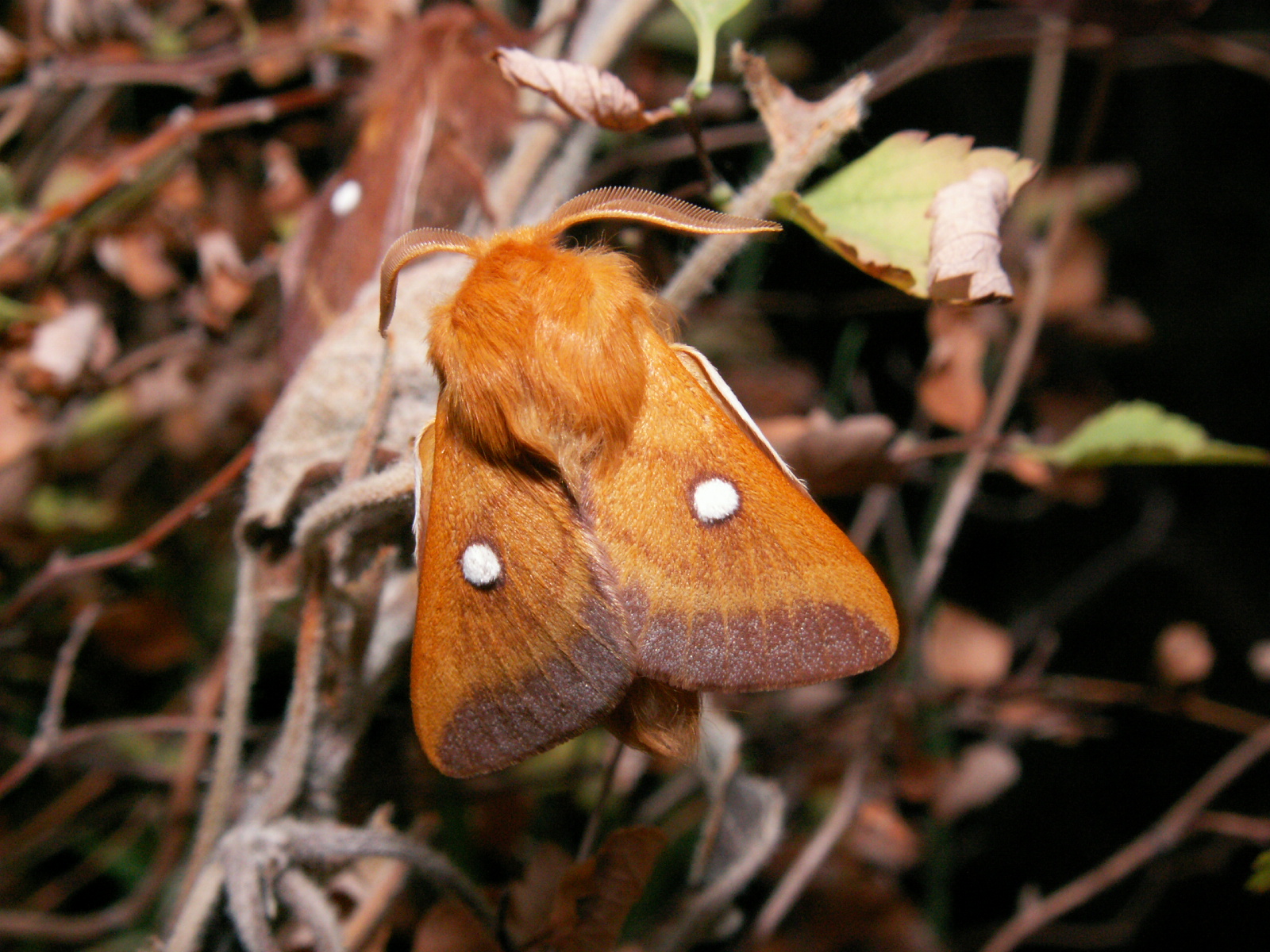
Eastern Eggar (Eriogaster catax)
Larvae prefer sunny, xerothermic habitats with the presence of food plants: hawthorn (Crataegus sp.), sloe plum (Prunus spinosa). It avoids large bushes in shaded formations, while low bushes in grazed pastures are ideal for this species. The caterpillars live in nests in April – May and individually crawl out in June. Adult butterflies fly at night during September and October. In Slovakia, their populations are decreasing and the area of historically large suitable habitats is also shrinking, as the butterflies are tied to the initial stages of overgrowing meadows and pastures. In order to preserve its populations, selective management aimed at restoring both the spatial and age structure of hawthorn meadows is necessary.
Marsh Fritillary (Euphydryas aurinia)
Isolated populations live in wetlands with a food plant Succisa pratensis or in open dry grasslands, where larvae feed on Scabiosa canescens, S. columbaria and Knautia arvensis. Adults fly in one generation in May and June.
Populations in Borská nižina have been exterminated by extensive use of insecticides and afforestation of dry grasslands (Bežnisko), or by intensive mowing of wetlands (Abrod) in July, when larvae are most vulnerable to destruction. A stable isolated population have recently been discovered in eastern Slovakia (Dukla). By limiting inappropriate management, the restoration of historical sites of this extremely rare species is possible. In Hungary, the last strongholds of the wet ecotype of the species are in the project area, but here they also underwent a severe decline in the last decade.
Protection measures are the prevention of succession and time-appropriate mosaic mowing with the complete exclusion of mulching.
Scarce Fritillary (Euphydryas maturna)
This species occurs in very isolated and local populations on the edges of lowland forests and valleys containing a mixture of old and young low-growing trees and shrubs. Adults fly in one generation in late May to June. The larvae develop on leaves of Fraxinus excelsior or Ligustrum vulgare from June and in April – early May after overwintering in silken nests. In most localities this species is threatened by destruction of the original lowland forests and excessive use of insecticides. Mostly due to intensive forestry methods, populations are decreasing.
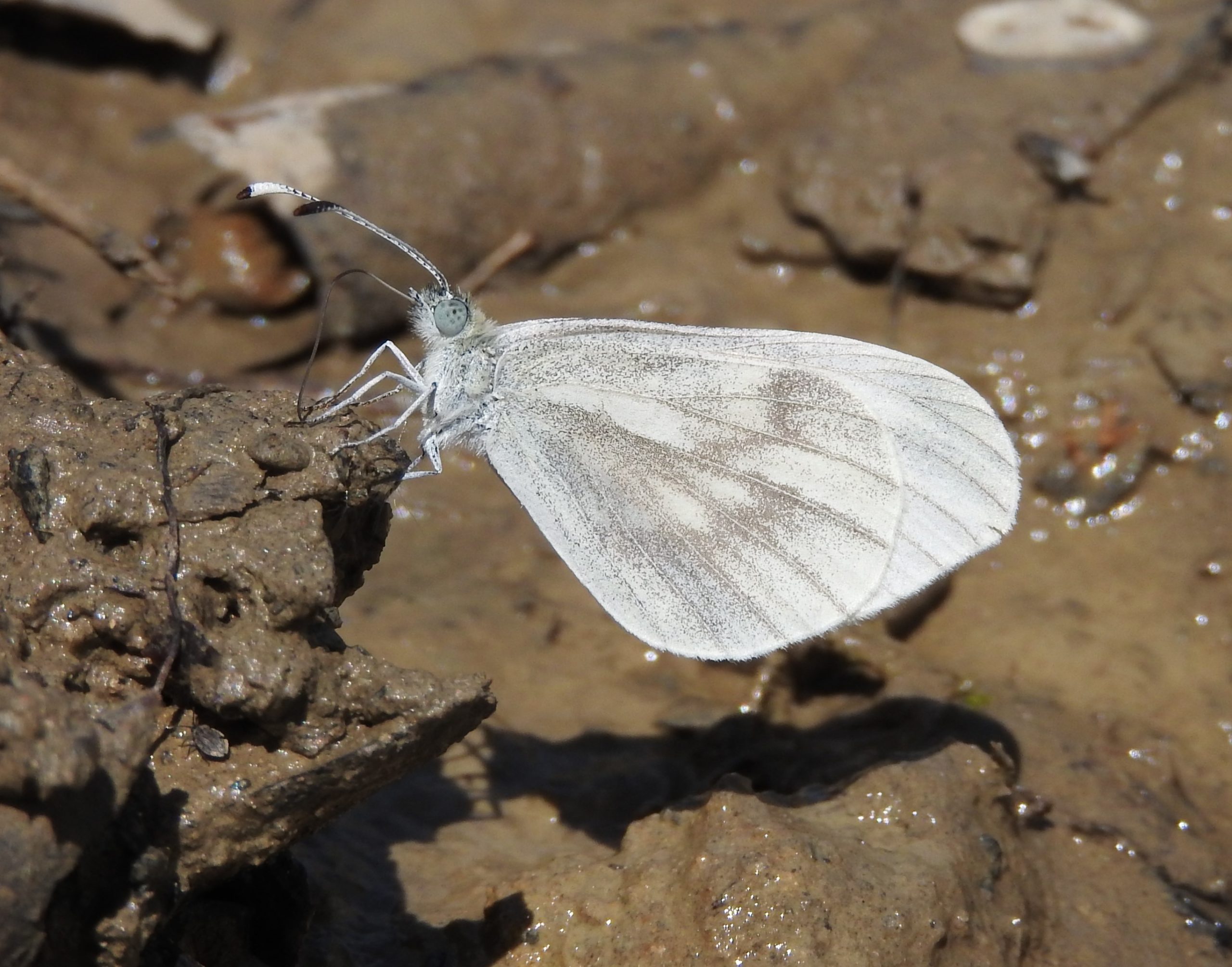
Fenton’s Wood White (Leptidea morsei)
A typical type of diurnal butterfly of light grassland forests. Its occurrence is currently only known in Slovakia recently from Spiš and Liptov. In the rest of Slovakia, its occurrence is more recently unconfirmed. The territory of Hungary is also not confirmed recently. In Romania, this species is known from Transylvania and northern Muntenia, it can also occur in the Oltenia region. Some of the largest known populations in Europe still survive in Transylvania. Monitoring of this kind is insufficient both in Slovakia and in Romania. The difficulty of monitoring also lies in its similarity to related butterflies of the genus Leptidea, which occur with it in same locations.
Leptidea morsei inhabits sparse, well-lit forests, forest clearings and edges in the foothills. The limiting factor for the occurrence of the species is the abundant presence of its food plants, which are several species of Lathyrus sp. or Vicia sylvatica.
Depending on the location and place of occurrence, the butterflies fly in one or two generations first from mid-April to mid-June and later in July – August. The female lays her eggs in lower positions mainly on Lathyrus vernus and L. niger, but in Transylvania more often also on L. hallersteinii. Females of populations from higher locations lay their eggs on Vicia sylvatica. Butterflies react sensitively to adverse weather conditions and have a slow flight. The main source of nectar is the flowers of species from Fabaceae family.
Woodland Brown (Lopinga achine)
A Euro-Siberian species forming closed isolated populations. Historically, it was a widespread diurnal butterfly of pasture forests in Slovakia. Today, its occurrence is limited only to sparsely lit forests and forest-steppes in eastern Slovakia (e.g. Slovenský Kras – Horný vrch, Fabiánka) or in the Volovské vrchy. Adults fly in June to the beginning of July in well-lit places with a specifically developed shrub floor, which it plays an irreplaceable role in wedding flights and the mating of images. Larvae feed on grasses (Brachypodium sp.). In Romania, it occurs in hilly areas. It is very rare, surviving only from a few, very small populations in the Bucharest area. Even in Hungary, this species is strictly protected and extremely rare, its occurrence is limited to open forests and forest clearings.
This species is a good indicator of the original bright pasture forests with a winding mosaic of shrub floor and at the same time an abundant growth of herbs. In the current era of the prevailing economically used high-stemmed forests these are very unique habitats hosting a huge diversity of plant and insect species, rarely occurred nowadays.
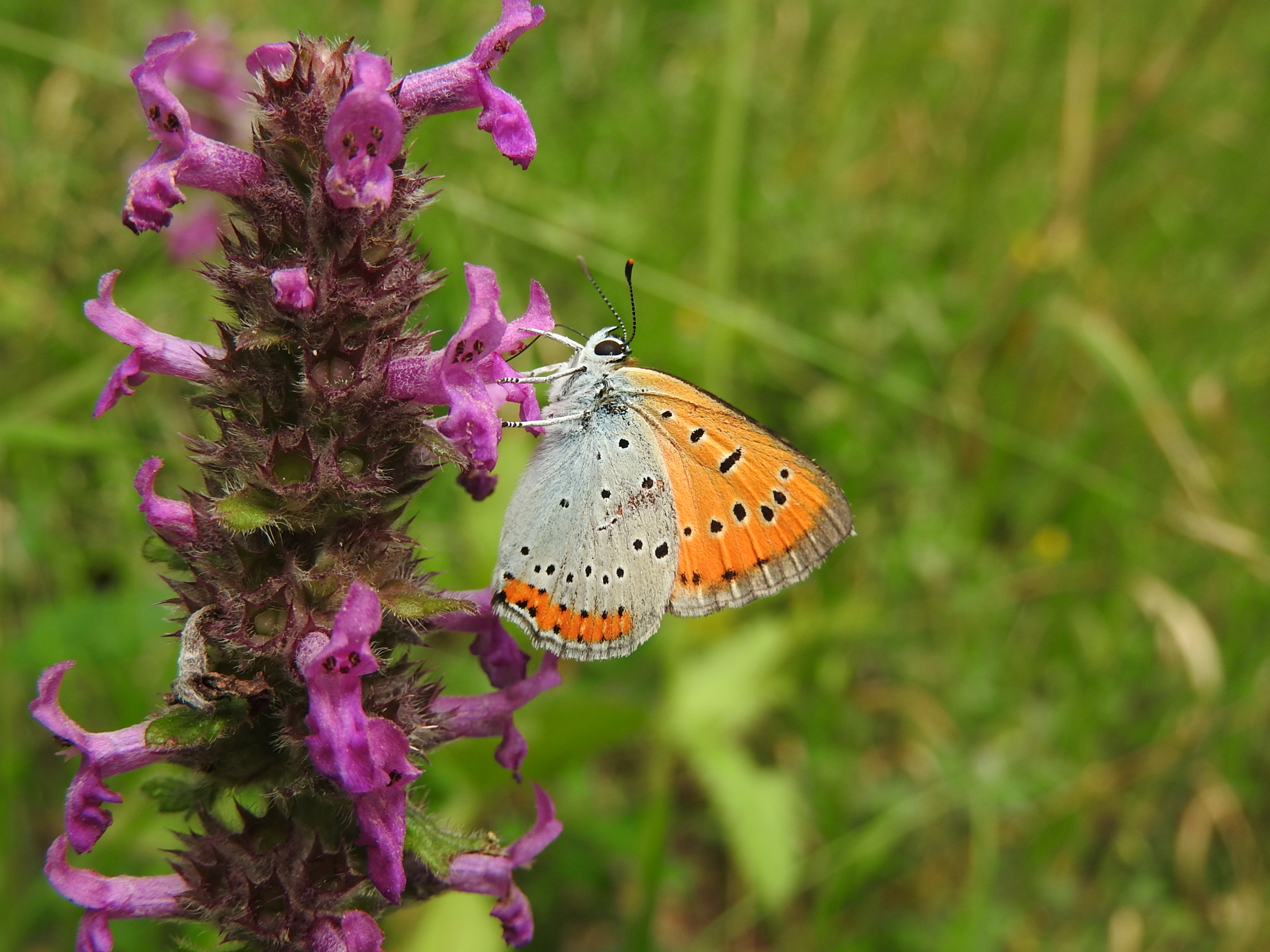
Large Copper (Lycaena dispar)
A heat-loving species that inhabits herbaceous banks of running and standing water and wetter valley meadows with a well-preserved water regime. The adults fly in two generations in May to June and July to August on lowland dry and wet meadows with abundant food plants such as Rumex crispus, R. hydrolapathum and R. aquaticus. Even in the past, the butterfly was not abundant in the localities where it occurs. It reacts very sensitively to changes in the environment. The reason for the decline of this butterfly is the loss of water in the habitats. Last but not least, the intensification of agricultural practices and the gradual overgrowing of natural wet meadows and springs with bushes. The main protective measure is to maintain or restore the water regime and to prevent the sites being overgrown with successive trees.
Violet Copper (Lycaena helle)
Missing in Slovakia, does not occur in Hungary. A species with a relatively compact distribution in Scandinavia and Siberia. In Romania, viable populations remained only around Baia Mare, Satu Mare and Șercaia. Over the last 100 years, as a result of the degradation of localities, several populations have become extinct in Bohemia and Moravia and in Poland. Currently successfully restituted to Šumava in Czech Republic. It occurs very locally in mezohygrophilous meadows or forest clearings and springs with the occurrence of Polygonum bistorta, which is the exclusive food plant for the larvae. Adults fly in two generations: May – mid-June and July – mid-August. Males are strongly territorial. They hibernate in the pupa stage. The main protective measure is the preservation of an undisturbed water regime and appropriate management of the locations of its occurrence. Mosaic mowing and succession prevention. For this species, in addition to the restoration of destroyed habitats, the expected measure is also the transfer of individuals from locations where it still occurs.
Large Blue (Phengaris arion)
These butterflies are strictly myrmecophilous and the larvae spend most of their development in anthills adopted by ants of the genus Myrmica. Therefore, this species needs locations with sufficient colonies of ants of this genus for its occurrence. This is a typical pasture species, which mainly inhabits extensively used and grazed grasslands with the occurrence of Thymus sp. and Origanum vulgare. It has only one generation per year. Many local populations became extinct due to changes in land use and the loss of extensive grazing. Most of the remaining populations are small and isolated. For possible future translocations, genetic studies are necessary to determine the specific status of each population.
The current status of this species in Romania is unknown, therefore it is essential to monitor and identify new populations. The main protective measure is the restoration of extensive mowing and grazing.
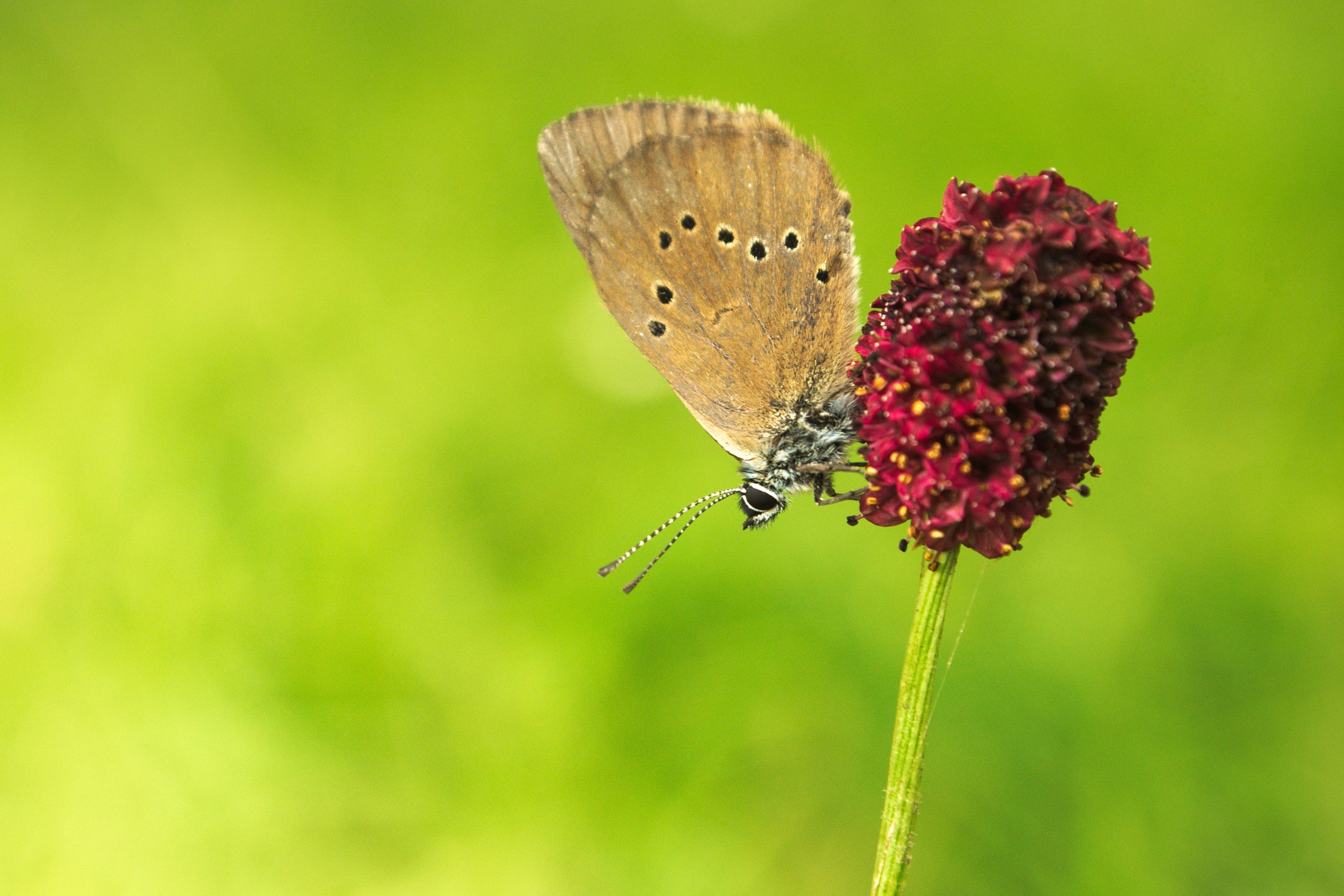
Dusky Large Blue (Phengaris nausithous)
In Slovakia, its area of distribution is limited to wet meadows in the Borská nižina (Abrod, Rudava), the Biele Karpaty mountains (Holubyho kopanice) and the Turčianska kotlina, where it is usually sympatric and synchronous with Ph. (M.) teleius. Several local populations have become extinct due to the intensification of agricultural practices and the drainage of wetlands.
Adult individuals fly from the end of July to August and lay their eggs in the flowers of Sanquisorba officinalis. The larval development is similar to the previous species.
Its largest population in Hungary can be found in the area of Őrség in mixed populations with Ph. (M.) teleius and Ph. (M.) alcon. Also important for its occurrence are the scrubby edges of wet meadows, which farmers have eliminated in recent years in order to increase the subsidized area. Some of its habitats were overgrown with invasive Solidago gigantea.
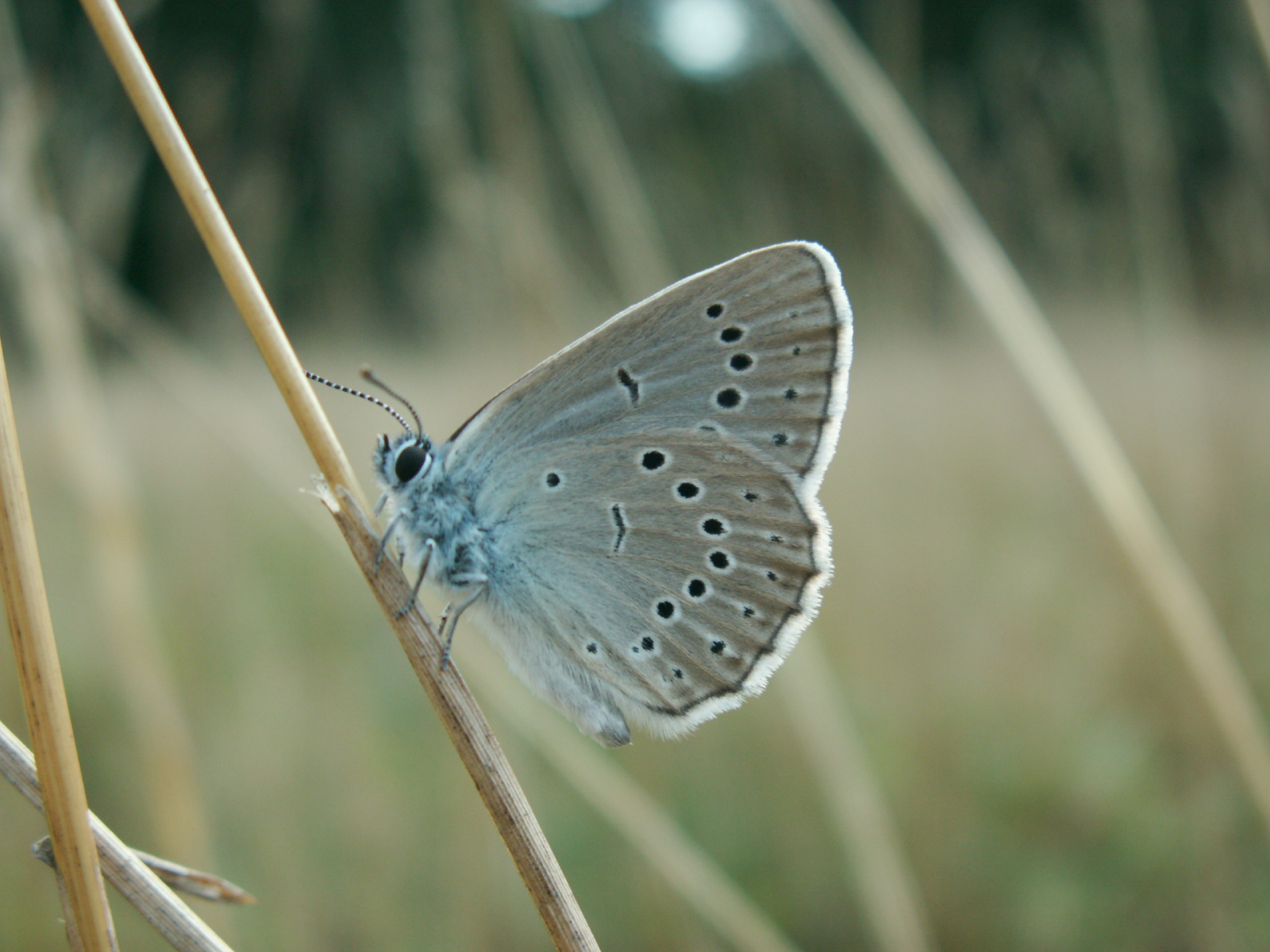
Scarce Large Blue (Phengaris teleius)
A species that requires moist meadows with an abundant presence of a foot plant Sanquisorba officinalis) in whose flowers they lay their eggs. Young larvae feed on flowers, and 4th instar larvae take ants (Myrmica sp.) to their underground anthills, where they develop and emerge as adults the following summer. Many populations of Ph. (M.) teleius have become extinct as a result of intensification of agricultural practices and drainage of wetlands.
In Hungary, this species is common in the Őrség region, but has undergone a sharp decline in the last decade. Its survival depends on the appropriate timing of mowing and the availability of unmown areas.
In Romania, viable populations are known from Transylvania, Bukovina, Crișana, Satu Mare and Maramureș, but so far too few populations have been detected, so further monitoring is desirable.
The conservation measure for the populations of Phengaris (Maculinea) nausithous and Phengaris (Maculinea) teleius is primarily the preservation and restoration of the water regime of the sites. Avoiding succession and appropriate timing of mowing.
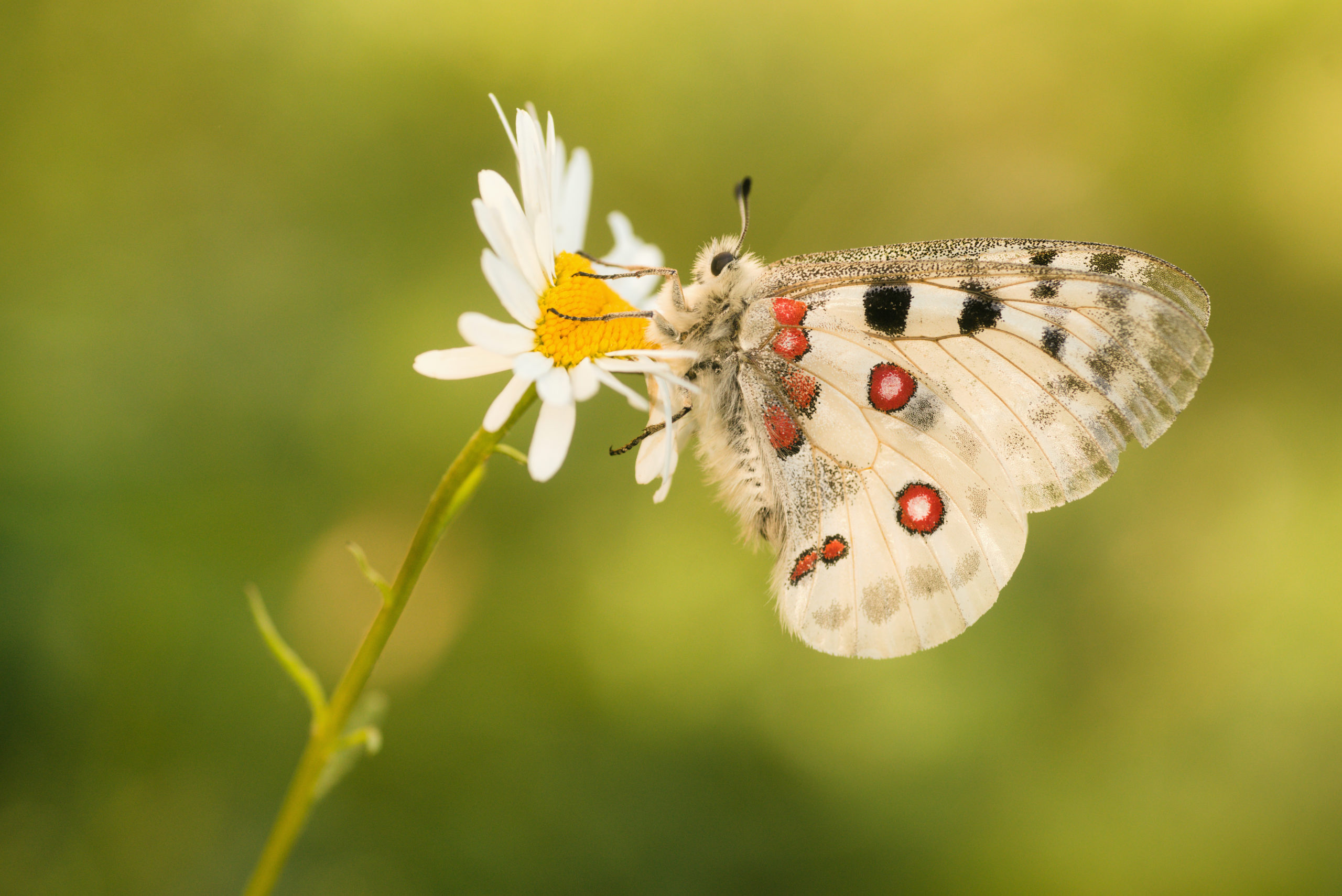
Mountain Apollo (Parnassius Apollo)
The species is existentially bound to the early successional stages of sites with exposed geological foundations, primarily in limestone areas of medium mountain locations. Adults fly from late June to August on rocky slopes and meadows with an abundance of caterpillar host plants: Sedum album, Hylotelephium argutum, H. maximum and Jovibarba globifera. In some localities, they probably also use Rhodiola rosea and various Sempervivum sp.. Flowers of Cirsium sp. and Carduus sp. are an important source of nectar for adults that live for 1-2 months. In the past, this butterfly was widespread in suitable non-forested locations in almost all limestone and some granite mountains of Slovakia. It is now extinct in most localities and it is alarming that historically known large populations of 570 localities have been reduced to 40–50 isolated colonies. Sites that once had thousands of individuals are now vulnerable to extinction with less than a hundred or a few hundred individuals. The main conservation measure is the restoration of habitats associated with the removal of inappropriate successive vegetation, or the restoration of grazing by suitable animals.
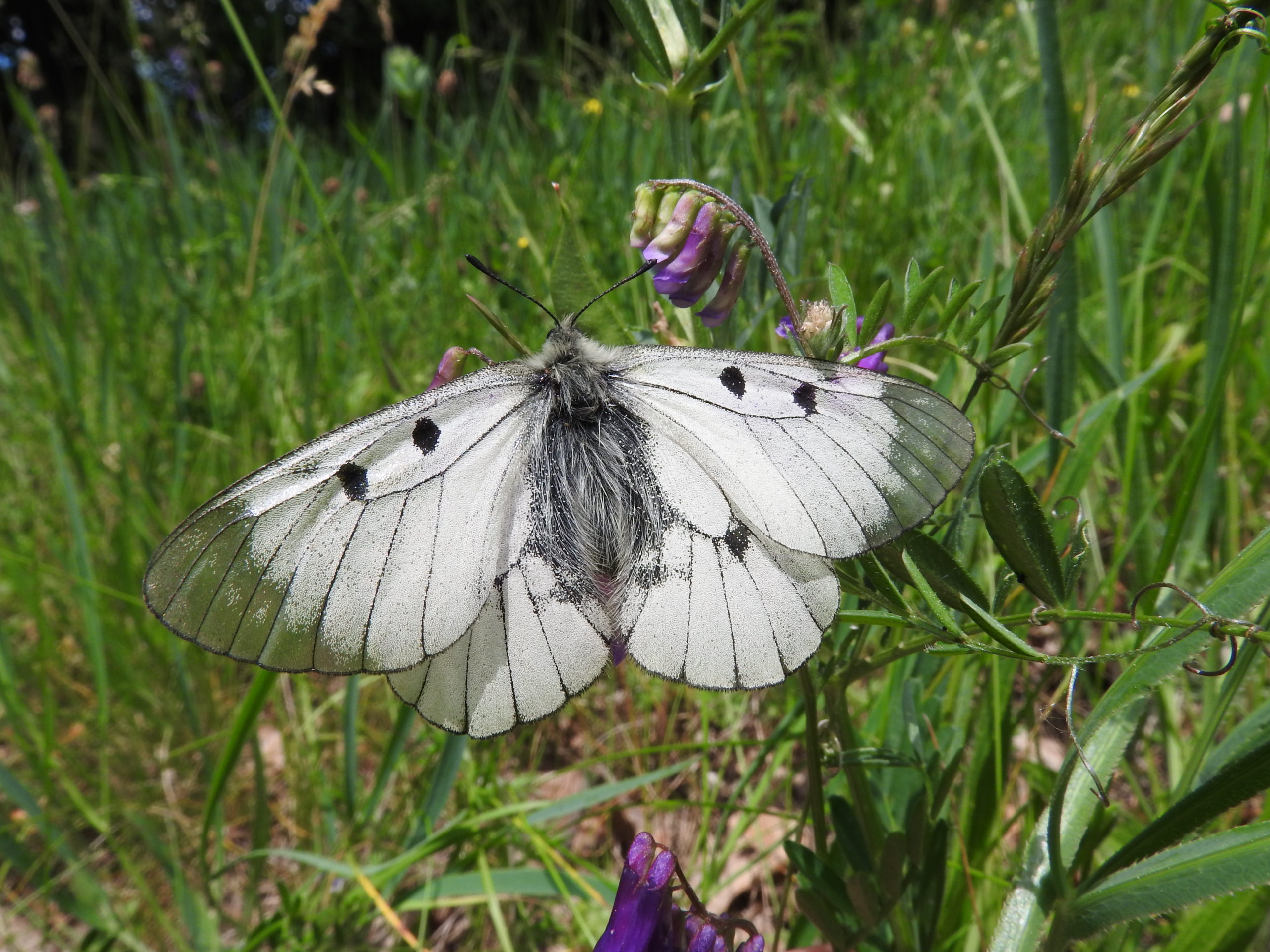
Clouded Apollo (Parnassius Mnemosyne)
An ecologically demanding heliophilous species occurring very locally from lowlands to mid-mountain locations. It flies in one generation in May and June in meadows, forest clearings and in sparse forest edges with a well-developed herbaceous layer. The host plants of the caterpillars are Corydalis cava and C. solida and other related species.
As a result of the conversion of extensively managed grazing forests to high forest stands, the originally large and interconnected populations in Slovakia were reduced. This fragmentation has resulted in the local extinction of populations in recent decades.
It is still a common species in the Őrség region, especially in stream valleys with extensive wet forests, forest clearings and meadows adjacent to forests, where the adult butterflies find food, but population is decreasing.
The protective measures focus primarily on the restoration of the structure of forest edges with a large number of food plants for larvae: Corydalis sp.
Bavius Blue (Pseudophylotes bavius)
This species is bound to steppe meadows on clay or calcareous soils. Adults fly from the end of April to the middle of May. They lay their eggs on Salvia nutans, on which larvae subsequently develop.
It is known from the Balkans, Turkey, Ukraine, northern Iran, Syria, western Kazakhstan and southern Russia with several subspecies. It does not occur in Slovakia and Hungary. In Romania, it is spread extremely locally, in small and isolated populations. Subspecies P. b. hungarica is endemic to the western half of the Transylvanian Depression. Populations from Dobrudja, which are also threatened, belong to a different subspecies. Accurate monitoring of each population is necessary.
Southern Festoon (Zerynthia Polyxena)
A heat-loving, extremely locally occurring species, whose adults fly in one generation in April and May. Its monophagous larvae feed on leaves and flowers of Aristolochia clematitis. They occur on food plants in June to July. Later, they also pupate on the food plant. The pupa waits, tied on the stalks, until spring, when a new generation of adults hatches. During this period, most meadows with food plants are mowed or mulched and most larvae and pupae are destroyed. Intensification of land use is the main threat to local populations.
In addition to species protection, the project also focuses on the restoration of habitat of the type 6210 Semi-natural dry grasslands and scrubland facies on calcareous substrates (Festuco-Brometalia) (*important orchid sites). They occur in warm locations from lowlands to foothills, on limestone, dolomite or calcareous sandstone. They are characterized by high biodiversity and the occurrence of many rare species, especially orchids, e.g. Anacamptis pyramidalis, Ophrys apifera, Ophrys holubyana. Annual mowing or extensive grazing is required to maintain a suitable condition. Many stands are currently abandoned and due to the rapid invasion of bushes, their area and quality have decreased. They are also threatened by afforestation and the absence of the traditional way of managing by grazing and mowing.
Project localities in Slovakia:
SKUEV0117 Abrod
SKUEV0274 Baske
SKUEV0566 Beckovské skalice
SKUEV0172 Bežnisko
SKUEV0267, SKUEV1267 Biele hory
SKUEV0278, SKUEV1278 Brezovské Karpaty
SKUEV0359 Dechtárske vinice
SKUEV0280 Devínska Kobyla
SKUEV0366, SKUEV2366 Drienčanský kras
SKUEV0669 Drieňové
SKUEV0048 Dukla
SKUEV0355 Fabiánka
SKUEV0125, SKUEV1125 Gajarské alúvium Moravy
SKUEV0367, SKUEV2367 Holubyho kopanice
SKUEV0356 Horný vrch
SKUEV0375 Krasín
SKUEV0566 Kyseľová a Mníchová úboč
SKUEV0362, SKUEV1362 Pieskovcové chrbty
SKUEV0117 Rudava
SKUEV0256 Strážovské vrchy
Project localities in Romania:
ROSCI0427 Pajiștile de la Liteni – Săvădisla
ROSCI0439 Valea Chiuruților
ROSCI0323 Munții Ciucului
ROSCI0274 Agârbiciu
ROSCI0253 Trascău
ROSCI0227 Sighisoara-Târnava Mare
ROSCI0074 Făgetul Clujului – Valea Morii
ROSCI0035 Cheile Turzii
ROSCI0002 Apuseni
Project locality in Hungary:
HUON20018 Őrség
Mapping, genetic screening of selected species, review on planned activities, habitat restoration, translocations and restitutions, exit strategy for restitution efforts
The abundance and distribution of all target species will be monitored at the project sites. The quality of habitats, methods of their management, availability of host plants and overall biological diversity will also be evaluated.
Thanks to these activities, we will have at our disposal:
– map data on populations and locations butterfly species of Habitats Directive
– map the distribution of suitable or potential habitat patches, stepping stones and biocorridors in the vicinity of the existing populations
– carry out genetic screening of at least 6 species for restitution purposes
– mapping results, which will be used not only to restore and improve the conditions of existing butterfly populations, but also to improve the connectivity and dynamics of metapopulations.
Conservation Actions in Slovakia
Habitat restoration will take place using best practices for target butterfly species. Removal of invasive vegetation, thinning of forests, creation of wider ecotones between forests and grasslands will be implemented. We will support a change in management from intensive cultivation of large-scale monoculture meadows and pastures to an extensively used mosaic of habitats with modification of the grazing regime, reduction of the number of animals per area, preference for mixed herds of goats, sheep, cows, horses and donkeys, leaving unmown lines of vegetation and solitary trees and bushes , and by the exclusion of mulching from management methods.
Many butterfly populations have become locally extinct due to the degradation of suitable conditions and also due to the limited ability to migrate longer distances. After the restoration of optimal conditions in these locations, we want to restore the populations either through individuals obtained by breeding or captured from sufficiently numerous populations.
With this activity we will restore and create:
– 170 ha of habitats by thinning the forests and clearing abandoned pastures, grazed forests
– 30 km of restored wide edges between forests and grasslands
– 200 ha of habitats with changed land use from intensive to extensive, creation of mosaic instead of monoculture grasslands
– 30 small-scale measures to create wetlands and bare soil
– 30 patches of seeded or planted food plants
– at least eight populations of selected species populations by rearing and release or by relocations
– 3 new localities included into NATURA 2000 network and 10 other sites as “insect biodiversity hotspots” under national law
Conservation Actions in Romania
In cooperation with the community, we will work to solve the social causes of habitat loss. Selected species will be restored to locations where suitable habitats exist but the species have died out.
At the project sites in Romania we will:
– restore 500 ha of grasslands from poor condition to suitable condition for target species
– reintroduce 2 species to suitable areas – Lycaena helle and Phengaris (Maculinea) teleius
– carry out range expansion of Pseudophylotes bavius
– promote the good management in at least 6 communities/valleys with a total area of approx. 1200 ha
Conservation Actions in Hungary
During the implementation of conservation measures, experience from previous similarly focused projects will be used, and the area managed with methods suitable for the target species will be increased, and connections between individual locations will also be created.
The Hungarian partner of the project will:
– restore 21 ha of habitats by thinning the forests and creation of opening glades
– restore 131 ha of grasslands by mowing
– plant food plants – Carex brizoides on an area of 200 m2
– restoration of Euphydryas aurinia to 2 sites of previous occurrence
Impact monitoring and evaluation
Monitoring will be focused both on the direct monitoring of the impact of project activities on the target species and also on the assessment of habitat changes and biodiversity with a focus on pollinators. The data will be gathered using European Butterfly Monitoring Scheme (eBMS) methodology. The inclusion of Slovakia and Romania in the eBMS is a significant benefit of the project: until now they have not participated. Hungary already cooperates with eBMS and will continue to provide data.
The evaluation of ecosystem services will be developed with the aim of using the achieved results in other projects and in arguments with interested parties, e.g. farmers and local residents to understand the importance and benefits of the measures and continue their application even after the end of the project.
Dissemination and communication
Through regular updating of the website, communication through social networks, creation of information panels and other information materials, medialization of the project on TV and radio, organizing volunteer events and guided tours. Short films about butterflies will also be created, and a specialized educational butterfly playground will also be created in NP Őrség.
Sustainability, replication, and exploitation of project results
The task of the project is also to support the discussion and cooperation of interest groups, such as farmers, the scientific community, key workers of institutions, offices and municipalities, non-governmental organizations and volunteers. We will inform them about best practices in the restoration and management of butterfly habitats and measures for their protection during workshops and presentations, or through publications.
University students will also be involved in the monitoring, who will be able to replicate their knowledge further. The knowledge gained during the project will be presented and discussed at regular meetings of lepidopterists in Hungary.
The project will support efforts to protect nature among local communities through the so-called “replication packages”, which will be used to cover the costs associated with e.g. with the cleaning of sites, the purchase of animals, small equipment or fencing, with the planting of trees on sites where the project does not directly affect.
WP1: Project Management and Coordination
T.1.1 Project Management
Key personnel have been hired for the project. Project partner meetings are held primarily online. Two project steering committees have taken place (in December 2023 and December 2024).
WP2: Mapping, Genetic Screening of Selected Species, Overview of Planned Habitat Restoration Activities, Translocations and Reintroductions, Exit Strategies for Reintroduction Efforts
T.2.1 Mapping of Populations, Habitat Quality, and Insect Biodiversity
In Slovakia, species and habitat mapping was carried out in 2023 and 2024, primarily in the areas of the Myjava Uplands, Little Carpathians, White Carpathians, Považský Inovec, Strážov Mountains, and Nitrické vrchy Mountains. The monitoring will continue in 2025, including new locations in the Cerová vrchovina Protected Landscape and Slovak Karst. After the monitoring is completed, a map of the most significant biodiversity sites will be created.
In Romania, monitoring was conducted three times per year in 2023 on 37 transects and in 2024 on 52 transects. A total of 97 species of day-flying butterflies were recorded. On large cattle pastures, 28 individuals of 12 species were observed, while traditional meadows hosted up to 50 individuals of 15 species. Inventory maps of the target species—the Danube Clouded Yellow (Colias myrmidone) and Fenton’s Wood White (Leptidea morsei)—were developed.
In the Hungarian project area, mapping was conducted for the quaking-grass sedge (Carex brizoides) , a host plant for the Woodland Brown (Lopinga achine). From sufficiently strong source populations, 240 specimens will be transplanted to other locations.
WP3: Conservation Activities in Slovakia
T.3.1 Habitat Restoration
In six Sites of Community Importance (SCIs), 93.48 ha of abandoned pastures and grazed woodlands (of the planned 170 ha) and 3.1 km of forest edges (of the planned 30 km) have been cleared. On 78.31 ha of these cleared areas, BROZ, in cooperation with local farmers, has already initiated grazing, and 4.11 ha are being mown by the State Nature Conservancy of the Slovak Republic (ŠOPSR) to prevent habitat overgrowth.
A shift from intensive land use to extensive management, with the creation of mosaic structures instead of monocultures, has been achieved on 71.37 ha (of the planned 200 ha). In these locations, mulching has been replaced by grazing or mowing, and intensive grazing has been replaced with extensive grazing, featuring fewer animals and rotational grazing.
In two locations in the Holubyho Kopanice area, wetlands were restored and 15 small plots were established over 1.8 ha, where host plant species were planted or sown: woundworts (Anthyllis vulneraria), European birthworts (Aristolochia clematitis), Corydalis cava, fumeworts (Corydalis solida), star gentians (Gentiana cruciata), fly honeysuckles (Lonicera xylosteum), common sainfoins (Onobrychis viciifolia), and great burnets (Sanguisorba officinalis). Additionally, 1,090 trees were planted on 11.7 ha.
T.3.3 Land Purchase and Lease
Under this activity, BROZ purchased 5.24 ha of land out of the planned 10 ha. The land will be used for activities aimed at achieving favorable conservation status of habitats and species, for scientific research purposes, environmental education and awareness, support for organic farming, and the keeping of domestic livestock.
T.3.4 Improving Connectivity Between Areas
Five new Sites of Community Importance were added to the NATURA 2000 network: Lúky pod Čičermancom, Bielokarpatské predhorie, Nový vrch, Lúky Horného vrchu, and Silickobrezovské lúky.
An additional 14 existing sites were expanded: Rokoš, Strážovské vrchy, Krivoklátske lúky, Holubyho kopanice, Krasín, Žalostiná, Lipníkovské, Hubovo, Dolný vrch, Fabiánka, Horný vrch, Kečovské škrapy, Plešivská planina, and Silickobrezovské lúky.
WP4: Conservation Activities in Romania
T.4.1 Restoration of Pastures and Hay Meadows
In Romania, this activity has so far been implemented on 7.5 ha due to the need for mapping.. By the end of 2025, a total of 200 ha of pastures and hay meadows are planned to be restored, primarily in areas where the target species occur: the Bavius blue (Pseudophilotes bavius), the Scarce Large blue (Phengaris teleius) and the Danube Clouded Yellow (Colias myrmidone).
T.4.2 Restoration of Populations and Expansion of Target Species Ranges
Romanian partners began the reintroduction of the Pseudophilotes bavius hungarica butterfly. In May 2023, 11 individuals (10 females and 1 male) were translocated from the source population to a new site with a sufficient presence of the host plant Salvia nutans. The following year, 14 individuals of this target subspecies were observed at the new site, and the population was further reinforced with 6 more individuals (5 females and 1 male). During later monitoring, caterpillars in advanced developmental stages were found, indicating that the reintroduction was successful.
An attempt to colonize a new site was also made for the Scarce Large Blue butterfly (Phengaris teleius). In July 2023, 10 females were released onto meadows with Sanguisorba spp. (host plants), and one individual was observed a month later. In the following year, the presence of the butterflies at the site was confirmed again. However, late mowing at the end of the growing season is necessary to support host plant development.
T.4.3 Development of Local Management Plans with Communities
Meetings with local farmers were held in four Romanian villages, where the project and required land management practices for butterfly habitat restoration were presented.
WP5: Conservation Activities in Hungary
T.5.1 Habitat Restoration
The original plan to restore 51 ha of habitat has already been exceeded. Hungarian project partners successfully improved the condition of 41 ha of sites for The Marsh Fritillary (Euphydryas aurinia) and 20 ha of sites for the Maculinea butterfly species (Phengaris). Thanks to agreements with local farmers, management practices focused on the needs of target butterfly species will continue on an additional 11 ha of meadows. Habitat quality improvements were reflected in an increased number of Euphydryas egg clutches recorded during 2024 monitoring compared to 2023.
Additional measures addressed the habitat requirements of The Woodland Brown butterfly (Lopinga achine). This species thrives in open forest stands with healthy growths of the quaking-grass sedge (Carex brizoides). Therefore, on approximately 3 ha, densely growing trees were thinned to allow more sunlight to reach the forest floor and improve habitat conditions.
For the Clouded Apollo (Parnassius mnemosyne), lightly wooded forest edges with a rich presence of nectar-producing plants are crucial habitats. Measures focus on removing dense stands of goldenrod (Solidago spp.) and suppressing the regrowth of this invasive plant. Cleared areas will be sown with seed mixtures of species typical of mesophilic grasslands.
WP7: Dissemination and Communication
T.7.1 Media and Public Relations
A dedicated project website was launched in Slovak, English, Romanian, and Hungarian to inform the public. An article titled “Umbrella, Keystone, and Flagship Species Are Irreplaceable for Us” was published in the magazine Doma v záhrade. The project was also presented through a short film produced by Mossy Earth, shot at the Beckovské Skalice site. BROZ published 6 posts on its Facebook page and the State Nature Conservancy (ŠOP SR) published 11 posts.
Temporary informational signs were installed at conservation action sites to inform the public about ongoing activities and their significance.
The project was promoted through various materials, including woolen hats and headbands, temporary tattoos for children, apple juice, and a leaflet titled “Grazing is Salvation,” (Pastva je spása) which was distributed in cooperation with the Doma v záhrade magazine.
Romanian partners secured the broadcast of news segments about the project on Antenna 3 CNN, Pro TV, and Radio Brașov. They also published 10 posts on Facebook, LinkedIn, and Instagram. Project activities are also featured on their website.
Hungarian partners created four roll-up banners, mainly used during workshops and conferences, to share information about the target species, the NATURA 2000 network, and the LIFE programme.
T.7.2 Activities for Target Groups
In Hungary, three guided tours were conducted to raise public awareness of the importance of the target butterfly species. In Slovakia, seven excursions were organized in Holubyho Kopanice, Beckovské Skalice, and on farms participating in the Living Landscape scheme.
The State Nature Conservancy (ŠOP SR) organized 22 workshops where participants voluntarily contributed to conservation efforts, such as clearing overgrowth, building electric fencing on pastures, mowing meadows, and collecting hay.
In Romania, 158 people joined excursions in 2024, learning about the state of meadows and pastures and butterfly occurrence. Additionally, five field trips were organized for 160 students, who had the opportunity to learn about biodiversity and recognize various butterfly species.
WP8: Sustainability, Replication, and Utilization of Project Results
T.8.1 Networking, Knowledge Transfer, and Replication
As part of the project, we participated in several events focused on the exchange of expertise and experience, such as the EU CAT Network on Pollinators in Slovenia, the 14th European Conference on Ecological Restoration in Estonia, the Central and Eastern European LIFE Projects’ Platform Meeting, and events on innovative funding practices. We established networks with other projects such as LIFE RestoRED (Sweden), Biodiverse City LIFE (Hungary), and LIFE Apollo2020 (Poland, Czech Republic, Austria). We also attended a conference dedicated to the Apollo butterfly (Parnassius apollo) and organized a workshop on insect conservation and the risks associated with antiparasitic treatments.
The Romanian project partner, ADEPT Foundation, is an active member of the National Pollinator Group coordinated by WWF, which aims to draft a National Pollinator Plan. They are also establishing contacts with similar projects, including BeeActive, Showcase, and SafeGuard Horizon, organized by the Romanian Lepidopterological Society. Additionally, they participated in the Pollinator Friendly Farming Workshop held in Ljubljana, Slovenia.






